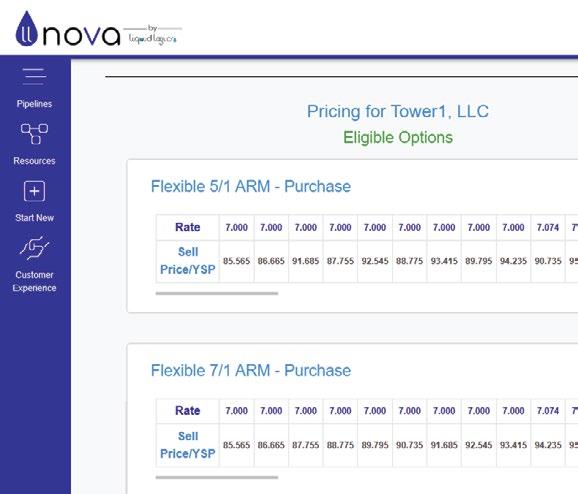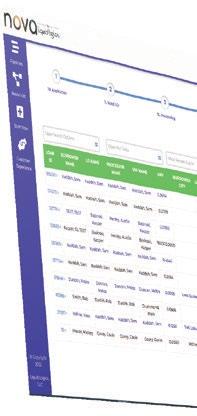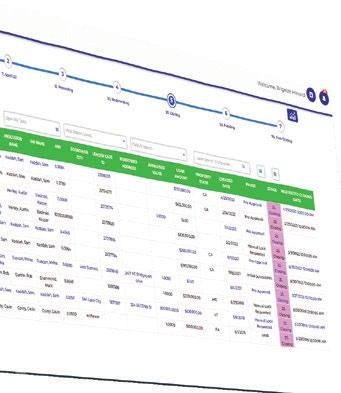




FEATURING ALEX OFFUTT, CEO OF BUSINESS PURPOSE CAPITAL
CORPORATE
•
• Entity Formation and Governance
• Corporate Transactions and Combinations
• Mortgage Licensing

BANKING & FINANCE
• Nationwide Loan Document Preparation
• Foreclosure and Loss Mitigation
• Nationwide Lending Compliance
• Capital Markets Agreements and Negotiation
LITIGATION & BANKRUPTCY
• Foreclosure Related Litigation
• General Business Litigation (Partnership, Investor, and Vendor Disputes)
• Creditor Representation in Bankruptcy
• Other Mortgage Loan Litigation
• Collection Actions
• Defense of Claims from Borrowers
• Replevin
•
• Expert Interviews with Industry Leaders
• Explore What Drives Successful Companies
• Inspiring Stories and Insights

5 This is the Market
Linda Hyde, American Association of Private Lenders
6 Spot Straw Buyers Before They Burn You
Alesondra Mora, FlipCo Financial
12 Transactional Funding Fraud Nearly Killed Us
Robert Greenberg, Ternus
18 Appraised to Fail
Rodney Mollen, RicherValues
26 Proposed Law Adds Hurdles for Collecting Default Interest
American Association of Private Lenders
28 Dig Out Stalled Projects With the Right Developer
Jill Duke and Keith Tibbles, Level Capital LLC
34 Make Title an Advantage, Not a Bottleneck
Michelle Esparza, Priority Title & Escrow


38 Manage Every Loan Like It’s Day One
Evan Brody, Rehab Financial Group
48 The Hardest Deal You’ll Ever Close Might Be Your Own
Romney Navarro, Ragland Navarro Capital
52 Turn Broker Relationships into a Competitive Edge
Alan Tiongson, Constructive Capital
58 Lead from the Front with Alex Offutt, CEO of Business Purpose Capital
68 Same Market, Different Results: Why Some Lenders Are Winning Big
Nema Daghbandan, Esq., Lightning Docs
80 Multifamily Is Winning the RTL Recovery
Sam Kaddah, Liquid Logics, and Aleksandra Simanovsky, Adige Advisory
88 Tier II and III Markets Surge
Michael Fogliano and Sean Morgan, Forecasa
98 Find Your Purpose to Define Your Process
Larry Gilmore, ClearBlu Capital Group
100 The Contractor Vanished (But the Deal Didn’t)
Alex Buriak, Jet Lending
104 Don’t Let These 10 Misconceptions Get You Sued
Nichole Moore, Esq., and Jennifer Young, Esq., Fortra Law
108 Pay Now or Pay Later
Phil Feigenbaum, Huffman Associates LLC
112 Summer Guide
LAST CALL
114 Doubt Is My Edge
Janine Cascio, Simplending Financial

LINDA HYDE President, AAPL
KAT HUNGERFORD
Executive Editor
CONTRIBUTORS
Evan Brody
Alex Buriak
Janine Cascio
Nema Daghbandan, Esq.
Jill Duke
Michelle Esparza
Phil Feigenbaum
Michael Fogliano
Larry Gilmore
Robert Greenberg
Sam Kaddah
Rodney Mollen
Nichole Moore, Esq.
Alesondra Mora
Sean Morgan
Romney Navarro
Aleksandra Simanovsky
Keith Tibbles
Alan Tiongson
Jennifer Young, Esq.
COVER PHOTOGRAPHY
Rafe and Stephanie Grigar
PRIVATE LENDER
Private Lender is published quarterly by the American Association of Private Lenders (AAPL). AAPL is not responsible for opinions or information presented as fact by authors or advertisers.
SUBSCRIPTIONS
Visit aaplonline.com/subscribe.
BACK ISSUES
Visit aaplonline.com/magazine-archive, email PrivateLender@aaplonline.com, or call 913-888-1250. For article reprints or permission to use Private Lender content including text, photos, illustrations, and logos: E-mail PrivateLender@aaplonline.com or call 913-888-1250. Use of Private Lender content without the express permission of the American Association of Private Lenders is prohibited.
www.aaplonline.com
Copyright © 2025 American Association of Private Lenders. All rights reserved.
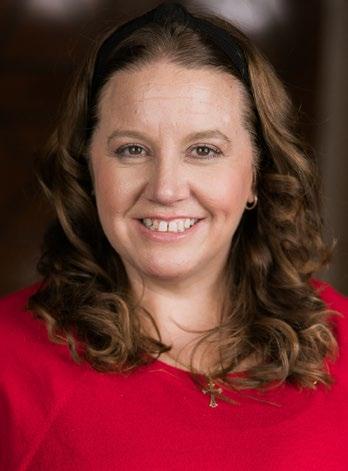
We’ve been hearing the same recycled phrases for half a decade now: “turbulent times,” “market uncertainty,” “volatility.” These aren’t excuses anymore. This is the market. Adapt.
At a recent leadership roundtable, a broker asked how to handle lenders quoting 12–16% on standard deals. The room practically exploded. Everyone agreed: Those rates were out of line unless the deals were riddled with risk. They weren’t.
So, how was the broker supposed to know what’s typical?
That’s exactly the problem.
Fortunately, several AAPL members were in the room. They pointed to the tools, standards, and education we’ve spent more than 15 years building—tools this broker should have already had access to. Tools we’ve been pushing so loudly and for so long, I didn’t have to open my mouth. The work spoke for itself.
But education isn’t enough. Enforcement matters just as much.
Doing the right thing when business is booming is easy. When things get tight, the cracks show—and lately, they’re looking more like canyons. We’ve seen a sharp rise in Code of Ethics complaints in the past two years. In fact, more than we saw in the entire decade before that. That tells us something: Some of you aren’t handling pressure well.
Even lacking poor intentions, the gunslinger way many operators respond to a crisis creates opportunities for negligence and outcomes that unjustifiably affect borrowers, investors, and other industry partners.
We’ve carefully refined our processes to handle complex situations where both sides may walk away dissatisfied. Fairness, impartiality, and transparency remain our priorities, especially when the market is anything but steady. We don’t step back when things get tough. Today, AAPL continues to stand as the industry’s only organization to comprehensively provide education on best practices—and enforcement of the same.
So, here’s the bottom line:
Your carrot: We’ve got your back. Real resources. Real support. Real accountability.
Your stick: If you fumble this “new normal” hard enough, don’t be surprised when you can’t make eye contact with us at the next conference.


LINDA HYDE President, American Association of Private Lenders
Assignment layering and masked entities are turning routine deals into high-risk traps.

Straw buyer fraud in hard money lending often reveals itself through contract assignments within wholesale transactions. Fraudsters often try to obscure their identity by layering multiple assignments, making it difficult to trace who originally entered into the purchase agreement and who ultimately controls the property.
This method is particularly common among transactions presented by a supposed wholesaler and often brokered deals. The broker can serve as a buffer, further obscuring the actual details of a transaction. For instance, a wholesaler might assign a contract and then reappear as a member of the borrowing entity, effectively masking their control of the deal.
Another common presentation involves the use of family members or associates as the borrower of record. In these cases, a bad actor who has previously defaulted or been flagged by a lender will enlist a relative or friend to serve as the publicfacing borrower. The true operator of the project stays behind the scenes, reaping the benefits of funding while evading lender scrutiny. Additionally, newly formed entities are often used in
these schemes to conceal past failures or default history. Without thorough vetting, a lender may unknowingly fund a deal involving a high-risk operator.
The primary goal of a straw buyer scheme is to gain access to funding while shielding the real operator’s identity and track record. Fraudsters seek to off-load liability onto a third party— someone with a clean name, no negative borrower history, and no immediate red flags. This allows the true controller to receive funding for a project without disclosing past issues (e.g., loan defaults, project failures, or credit red flags).
In addition to avoiding liability, these schemes often conceal profits through assignment fees or by holding undisclosed equity positions behind the scenes. Once the loan funds, the straw buyer may play little to no role in execution, which significantly increases the risk of mismanagement or default.
Straw buyer fraud is a recurring issue in the hard money space. Although it may


not appear in every pipeline, it happens often enough to merit continuous monitoring and cross-departmental discussions among underwriting, origination, and compliance teams.
Hard money’s appeal to investors combined with its relatively lax documentation requirements has fueled a rise in fraud attempts. Although this rise is based on anecdotal evidence, it tracks with the broader mortgage industry, where the fraud risk is also rising.
In the second quarter of 2024, the CoreLogic Mortgage Application Fraud Risk Index jumped 8.3% year-over-year, with one in 123 applications flagged, and applications for multiunit homes spiked to a 3.5% fraud rate (one in 27).
Though straw buyer fraud is more prevalent in wholesale and brokered channels, no lending channel is immune. It’s critical that all departments remain vigilant. Lenders must embed red flag checks, regular fraud training, and cross-functional case reviews to mitigate the evolving threat.
Straw buyer fraud can have serious financial and operational consequences. One of the most concerning aspects is the lender never truly knows who is behind the project. The person executing the project is the single-most important variable in determining loan success. When that individual is hidden behind layers of assignments or shell entities, the lender’s risk assessment becomes fundamentally flawed. If the loan defaults, locating the real party behind the deal can be extremely difficult, especially if falsified documents or confusing ownership structures were used.
Although an asset in competitive markets, the speed of private lending can also be a liability. The pressure to close quickly may result in skipping due diligence steps, particularly when assignment paperwork appears clean on the surface.
Reputational harm is also a concern because repeated bad loans tied to undisclosed operators can erode trust among investors and partners. Finally, operational resources are drained when internal teams must spend hours investigating post-close issues, rereviewing documents, and initiating legal recourse that could have been avoided.
Lenders should adopt proactive measures to identify and prevent straw buyer schemes. First, incorporate onboarding processes for brokers and wholesale partners into funding review. Quality brokers vet deals thoroughly and willingly participate in a lender’s application process to access funding lines, rather than evading scrutiny.
For individual transactions, it’s crucial to require full transparency of contract assignments. Any deal involving assignments should include the original purchase contract, all assignment documentation, and disclosures of all parties receiving assignment fees. Conduct entity searches to identify overlapping ownership or shared registered agents between entities. Though layered entity structures can make this challenging, public records can still reveal patterns and relationships.
Borrower intake should involve more than a loan application. Take the time to learn how the borrower found your company, what experience they bring, and what they’re trying to achieve with the project.


In the absence of credit or background checks, which is common in agile hard money lending environments, it becomes even more important to gather narrative-based borrower insight.”
In the absence of credit or background checks, which is common in agile hard money lending environments, it becomes even more important to gather narrativebased borrower insight. Trust but verify. If the narrative and experience are adequate, a borrower should easily be able to provide documentation to support the claims. Client resistance to providing additional clarification or documents is a flag.
Be particularly cautious with newly formed entities. Although new LLCs with no track record are not inherently fraudulent, you should flag them for further review. A borrower who appears unfamiliar but is overly prepared with loan documentation may also indicate coaching or concealment.
Maintain consistency in tracking this information within a CRM so that multiple team members can detect patterns (e.g., repeated phone numbers, emails, or banking info linked to past bad actors). For example, if a loan application is for John Smith but the ACH authorization for interest payments lists another individual not shown on any entity or application paperwork, understanding how they are tied to the funding is imperative.
Technology plays a vital role in fraud prevention. A customer relationship management (CRM) system such as Salesforce or HubSpot can log contact
information, flag repeated behavior, and track entity overlap. State-level business registries and tools like LexisNexis, Clearbit, or even OpenCorporates can help verify business ownership and identify common actors. Lenders can also create assignment tracking templates or flow charts to visualize the movement of property contracts. This creates transparency around who initially secured the deal, who assigned it, and how it reached the final borrower. Consistent use of these tools helps prevent assignment layering from going unnoticed.
Finally, most loan origination systems (LOS) have built-in capabilities for workflows and automations. A good first step is to speak with your account manager to understand how to leverage your existing tech stack.
To maximize your technology, determine the data points most helpful to your deal analysis. Email, phone numbers, social security numbers, and employer identification numbers are good unique identifiers to start with. Include those trackable fields in your LOS. (If you don’t have a field to track, you cannot aggregate the data for your system to automatically raise flags.) Then, build monitoring processes and reporting around those criteria.
Use this guide to equip your team with practical steps for preventing and mitigating straw buyer fraud at every stage of the lending process. A layered defense that combines human judgment, legal safeguards, and targeted technology offers the strongest protection against today’s increasingly sophisticated straw buyer fraud schemes.
PREVENTION: BUILD STRONG FRONT-END SAFEGUARDS
» IMPLEMENT FORMAL BROKER VETTING. Set minimum experience, performance, and referral standards before allowing access to funding lines.
» REQUIRE FULL TRANSPARENCY ON ASSIGNMENTS. Collect complete documentation of the original purchase contract and all subsequent assignments.
» CONDUCT LAYERED ENTITY VERIFICATION. Research ownership overlaps and shared agents using public business registries.
» FLAG NEWLY FORMED LLCS. Request supporting documentation to verify credibility and purpose.
» CONFIRM BORROWER SOURCING. Ask how and why the borrower found your company; probe for undisclosed relationships or brokers.
» TRACK BORROWER CONTACT INFORMATION CONSISTENTLY IN A CRM. Capture emails, phone numbers, and banking details to detect patterns and repeat behaviors.
» UNDERSTAND EXACTLY WHO IS RECEIVING ASSIGNMENT FEES. Ensure recipients are not tied to the borrowing entity or obscured parties.
» CREATE AND USE ASSIGNMENT TRACKING TEMPLATES. Visualize contract flow and associated parties to detect layering or hidden control.
» IN ANY TRANSACTION INVOLVING ASSIGNMENTS, ALWAYS OBTAIN FULL COPIES OF THE ORIGINAL CONTRACT. This includes all assignment documents to prevent unauthorized or hidden borrower cash-outs.
RED FLAGS
» SHARED INTEREST OR OVERLAPPING OWNERSHIP THAT VIOLATES ARM’S LENGTH TRANSACTION STANDARDS
» SHARED REGISTERED AGENTS BETWEEN ENTITIES
» NEWLY FORMED ENTITIES WITH LIMITED/NO TRACKABLE HISTORY OR FINANCIALS
» BORROWER APPEARS UNFAMILIAR WITH PRIVATE LENDING PROCESSES BUT PRESENTS FULLY PREPARED LOAN DOCUMENTATION
» CONFLICTING BORROWER CONTACT INFORMATION (e.g., phone numbers, emails, or bank accounts not directly associated with the borrower or previously linked to flagged entities)
MITIGATION: BUILD PROTECTIONS FOR WHEN FRAUD OCCURS
» INCLUDE LOAN ACCELERATION CLAUSES IN AGREEMENTS. Allow immediate recall of loans in cases of misrepresentation or undisclosed assignments.
» REQUIRE PERSONAL GUARANTEES. Include cross-default clauses to provide additional leverage and recourse.
» INSERT STRONG INDEMNIFICATION CLAUSES. Hold borrowers financially responsible for losses or legal costs tied to undisclosed third-party involvement.
» USE LANGUAGE THAT VOIDS THE LOAN if undisclosed parties or control relationships are discovered post-closing.
» MAINTAIN AN INTERNAL DATABASE OF FLAGGED BORROWERS AND ENTITIES. It should include names, emails, phone numbers, and banking details; make it accessible to relevant departments while keeping it strictly internal.
» REQUIRE TRUSTED TITLE COMPANIES TO VALIDATE RECENT PROPERTY HISTORY AND OWNERSHIP CHAIN. Look for rapid resales, unusual transfers, or gaps in documentation.
» CONDUCT POST-CLOSE QUALITY ASSURANCE REVIEWS ON FIRSTTIME BORROWER DEALS. Verify that contact information, wiring details, and account ownership match authorized parties.
» ENSURE BORROWER BANKING DETAILS ALIGN WITH THE ENTITY ON RECORD. ACH authorizations and wire instructions should match verified borrower identity and documentation.
TECHNOLOGY
» PROPERTY HISTORY PLATFORMS (DATATREE, PROPSTREAM)
» WIRE VERIFICATION (CERTIFID OR SIMILAR PLATFORMS)
» CRM-BASED PATTERN TRACKING AND FLAGGED CONTACT MONITORING
» AI-DRIVEN TOOLS TO DETECT FRAUD PATTERNS ACROSS MULTIPLE DEALS
If straw buyer fraud makes it past closing, strong legal protections are the next line of defense.
Your loan agreements should include acceleration clauses that allow for immediate callback of the loan in cases of borrower misrepresentation or undisclosed changes in ownership. Personal guarantees tied to individuals with verifiable assets can provide leverage in recovery. Cross-default clauses can be effective when dealing with borrowers who operate multiple entities.
Indemnification clauses should explicitly state the borrower will be held financially responsible for any losses or legal expenses arising from undisclosed third-party involvement. In extreme cases, clauses that void funding obligations upon discovery of fraud can offer additional protection. Where feasible, requiring full recourse terms for first-time borrowers or those with complex assignments can act as a deterrent.
When a borrower is discovered to have committed fraud, their information should be recorded immediately in an internal watchlist maintained by each lender. This list should include flagged names, emails, phone numbers, and bank accounts. Maintaining a centralized internal list ensures institutional memory, even as staff and leadership change, helping your team avoid inadvertently approving future deals from known bad actors.
[EDITOR’s NOTE: It is critical that this information remain strictly internal. Sharing such a list across companies or attempting to create an industry-wide blacklist raises serious legal risks, including liability and potential antitrust violations. Although it may seem helpful to coordinate across lenders, doing so could expose participants to significant legal and reputational consequences. You must avoid
any perception of cooperative blacklisting efforts. Each company should maintain and act upon its own internal records, based solely on its underwriting processes and findings.]
Work only with trusted title companies that perform rigorous legal and due diligence checks. Title officers can offer valuable insight into unusual deal structuring or recent property transfers. Require them to provide complete property histories and flag rapid resales that might indicate a recycled fraud attempt. Post-closing audits of first-time borrower deals should be standard, and borrower banking information must always match the entity on record to confirm legitimacy.
Several tools are available to aid in mitigation. Property research platforms like DataTree and PropStream offer deep visibility into property ownership history. CertifID and similar platforms can verify wire instructions and prevent funds from being misrouted to unauthorized accounts. AI-driven software can identify behavioral patterns across deals, flagging repeat behaviors associated with known fraud risks. Additionally, custom modules within loan origination systems can be programmed to automatically flag suspicious borrower or deal characteristics.
Further, the AAPL Vendor Guide (aaplonline.com/vendors or Private Lender’s Winter issue) can help you find attorneys with experience in private lending documentation. It is important the attorney has specific private lending experience, not just real estate experience, to ensure state-level compliance related to borrowers, collateral, and loan products.
Straw buyer fraud is a persistent and evolving threat within the hard money
lending ecosystem. As the industry continues to grow and attract new players, the risk of fraud increases, particularly when speed and flexibility are prioritized over rigorous borrower scrutiny. Lenders must remain vigilant, balancing their desire to serve investors quickly with the need to protect capital.
By implementing structured onboarding, transparent deal documentation, and consistent borrower intake procedures, lenders can minimize exposure. Leveraging technology helps to detect patterns, store historical data, and assist with decisionmaking. Remember, however, technology—particularly AI—should be used as a tool to enhance processes, not as your only line of defense. If fraud does occur, a well-prepared mitigation strategy can contain the damage and preserve long-term operational integrity. Proactive awareness and coordinated prevention are essential to maintaining trust, performance, and safety in today’s private lending market.


Alesondra Mora is AVP of marketing for Streamline Funding. She has been cultivating creative approaches to real estate marketing for the last decade. Alesondra has worked within various areas of the real estate industry, ranging from real estate brokerages, legal, finance management, active investing to private lending.

EDITOR’S NOTE
This is the second reported instance of a private lender encountering this specific fraud scheme within AAPL’s membership. The recurrence underscores an urgent need for lenders to review their verification protocols and implement preventive measures immediately. Awareness and proactive action are critical to protecting your business in today’s lending environment.
Our private lending startup almost lost more than half a million dollars to fraud. Here’s what you can learn from our experience.
ROBERT GREENBERG, TERNUS
In hindsight, that initial interaction was a reconnaissance mission; it was our first glimpse of a fraudster preparing to launch a sophisticated social engineering scheme.”


Ternus is a young private lending company that prides itself on operating differently. We’re investorfocused, values-driven, and transparent. But in March, we came terrifyingly close to losing $645,000 in a sophisticated wire fraud scheme. What followed our discovery was an all-hands-on-deck response that tested our systems, our culture, and our core values. Thankfully, we caught the fraud in time—but just barely. We are sharing our story not to sensationalize, but to spotlight how fraud really happens and how others in the private lending industry can protect themselves.
The fraud began weeks earlier with a seemingly ordinary transaction that ultimately fell through. In hindsight, that initial interaction was a reconnaissance mission; it was our first glimpse of a fraudster preparing to launch a sophisticated social engineering scheme.
Our transactional funding product, a short-term bridge loan facilitating A-toB-to-C property deals, was at the center of the fraud. This product allows the buyer to close on a property and resell the same property in a separate deal for a profit—either on the same day or within
a few days. As the lender, we wire funds to the title company and get our money back within 24 to 48 hours. That short timeline turned out to be a blessing. When the first deal did not close, a title company representative circled back to one of our processors, suggesting they had another borrower in the same market seeking a similar type of deal. We were thrilled to get the referral, and the borrower completed all the necessary documentation. Since we’d “worked” with this title company before, everything seemed to check out.
But this was all part of their plan.
The title company appeared to be a local branch of a well-known, national company; the required documentation all came in quickly; and the email communication was all very typical, even including the name of the actual branch manager on emails (using a slight variation to the email address). But subtle inconsistencies—like a domain name ending in .org instead of .com—started to stand out. Grammatical mistakes in emails raised flags. The phone number appeared to be associated with a burner phone. The emails seemed to be written from a common template. And when our wired funds didn’t come back on schedule, our internal alarms went off.
The
title company appeared to be a local branch of a well-known, national company; the required documentation all came in quickly; and the email communication was all very typical
On the Friday morning we were expecting our funds to be returned, a simple checkin about the wire repayment triggered a cascade of action. Our head of closing
...”
reviewed the transaction chain with our chief operating officer, and suddenly everything clicked: This wasn’t a delay. It was a setup.
Within the hour, we had escalated the issue to our bank, initiated a wire recall,

Our footprint in local markets is continuing to grow. Look for us in California and join top tier talent offering the Renovo Experience to local investors.


locked down our bank accounts, activated our IT team, and started tracing every digital breadcrumb. At the same time, the operations team informed our CEO and the leadership team. We didn’t waste time with blame or cover-ups. Our team operated according to the values we’ve ingrained from day one—speed, transparency, accountability, respect, and service. Our trust in each other allowed us to act quickly and decisively, without fear of finger-pointing.
Because we acted within the allowable window for wire reversals, the bank flagged the transaction, coordinated with the receiving bank, and successfully returned our funds.
The emotional rollercoaster of nearly losing $645,000 was real. For a startup company, that kind of loss could have been devastating, perhaps even existential. Over that weekend, some employees worried the company might not survive. But by Monday morning, we were able to call an all-staff meeting, put the rumors to rest, and share that we had recovered the money.
But we also knew we couldn’t just celebrate and move on. We took immediate steps to investigate. Everyone involved was interviewed. We combed through access logs and asked our third-party verification provider for a full breakdown of where their validation process failed. We even collected IP addresses and other digital identifiers from the communications trail, and our general counsel sent a detailed fraud report to the FBI and local law enforcement.
This wasn’t an opportunistic scam; it was a carefully staged, multilayered deception, likely part of a sophisticated fraud network. Our hope is that the data we provided
will be added to a database of fraudulent activity that, over time, may help authorities identify patterns and catch the perpetrators.
Although we are proud of how our team responded, we also had to admit that our systems had vulnerabilities. The experience revealed gaps we didn’t know existed. Although we had controls in place, we learned that even strong systems can be sidestepped by smart, persistent bad actors.
So, we took action. First, we eliminated any reliance on email-only communication for onboarding new borrowers. Now, every borrower must be contacted by phone through our official company line, and those conversations are recorded and documented. This shift ensures auditability. Importantly, it also creates a layer of human interaction that can help detect suspicious behavior or inconsistencies that might not show up on paper. We also implemented a policy of independently verifying all title company contact information. Rather than calling the number listed in the email or wiring instructions, our staff now cross-checks phone numbers and email domains independently.
Another major change was adopting more advanced identity verification tools. We have partnered with services like LexisNexis to help confirm identities at the application stage, enabling us to flag suspicious applicants before they get too far into the pipeline. We also now use identity verification technology that allows realtime photo and ID comparisons to confirm applicants are who they say they are.
Beyond implementing technological solutions, we have doubled down on training, especially around social
Verify via recorded phone calls. Independently verify all title company contact info.
Use third-party identification tools (e.g., LexisNexis) at the application stage.
Implement real-time photo and ID matching.
Hold regular fraud and phishing awareness training.
Update a red-flag checklist with the latest scam tactics.
Hit pause on anything unusual: odd formatting, mismatched emails, or rushed timelines.
Social Engineering White Paper aaplonline.com/social-engineering/
Wire Fraud White Paper aaplonline.com/wire-fraud/
Wire Fraud Case Study aaplonline.com/fraud-case-study/
Fraud Priority Survey aaplonline.com/comments/
engineering and phishing red flags. We now hold regular fraud-awareness sessions and update our internal red-flag checklists based on the latest tactics scammers use. And our team is encouraged to take a moment to slow down, especially on high-dollar deals. Rushing, we’ve learned, is the enemy of good judgment. Even subtle anomalies, like odd punctuation or mismatched contact domains, are considered reasons to pause.
Our experience underscored the uncomfortable truth that private lending is fertile ground for fraud. The combination of fast-moving transactions, online interactions, and limited regulation makes us a prime target.
Although we had transaction-level insurance coverage to protect us from wire fraud through a third-party provider, we discovered the limitations of relying on a safety net. Even if they had paid out, it would have taken months—months that would have crippled our liquidity. Worse, it gave us a false sense of security that nearly cost us everything.
Today’s fraud isn’t amateur hour. It’s calculated and often rehearsed against your own systems. Scammers are learning your workflow and your patterns. They probe, they test, and then they strike.
The core takeaway is vigilance. Don’t rely on “green checkmarks” from third-party tools. Read the reports. Scrutinize the source. If a title company has a name that matches a national brand, dig deeper. If a borrower sounds just a little too polished or too desperate, pay attention.
And perhaps most important, don’t let empathy cloud your judgment. Borrowers often tell urgent, compelling stories. They push timelines, insist on speed, and may even try to guilt lenders into shortcuts.
We were fortunate. Our people responded quickly. Our systems gave us just enough information to piece things together. And our bank acted in time.”
Some of those stories will be real. But you must treat every transaction as if it could be a setup. Because sometimes it is.
That doesn’t mean abandoning relationshipbuilding, but it does mean establishing guardrails that apply to every borrower, every title company, and every funding request.
We were fortunate. Our people responded quickly. Our systems gave us just enough information to piece things together. And our bank acted in time.
But our real advantage came from our culture. The values we instilled from the beginning—speed, transparency, accountability, respect, and service— aren’t just words painted on the wall. We practice them. When something felt wrong, no one waited. No one tried to fix it quietly or protect their own reputation. Instead, they sounded the alarm, collaborated across departments, and did what needed to be done. Everyone made their best effort to stop the damage.
If this happened to us despite our use of sophisticated third-party tools, experienced staff, and internal protocols, it can happen to anyone. Fraudsters are getting smarter. They adapt. They evolve. So must we. Let our close call be your early warning.
Fraud prevention isn’t a one-time checklist. It’s a living, breathing exercise that needs to be reviewed and reinforced constantly. As Sergeant Phil Esterhous from “Hill Street Blues” used to say, “Let’s be careful out there!”


Robert Greenberg is the Chief Strategy Officer at Ternus Lending. Robert’s focus on innovation and long-term vision guides Ternus in crafting groundbreaking loan products and strategic partnerships that set the company apart from its competitors.
Greenberg’s role is centered on creating a forward-thinking, scalable infrastructure that streamlines product sales, underwriting, closing, servicing, and post-closing liquidity transfers. His approach to strategy emphasizes efficiency and growth, while his deep understanding of the real estate and lending markets helps him anticipate industry trends and adapt swiftly.
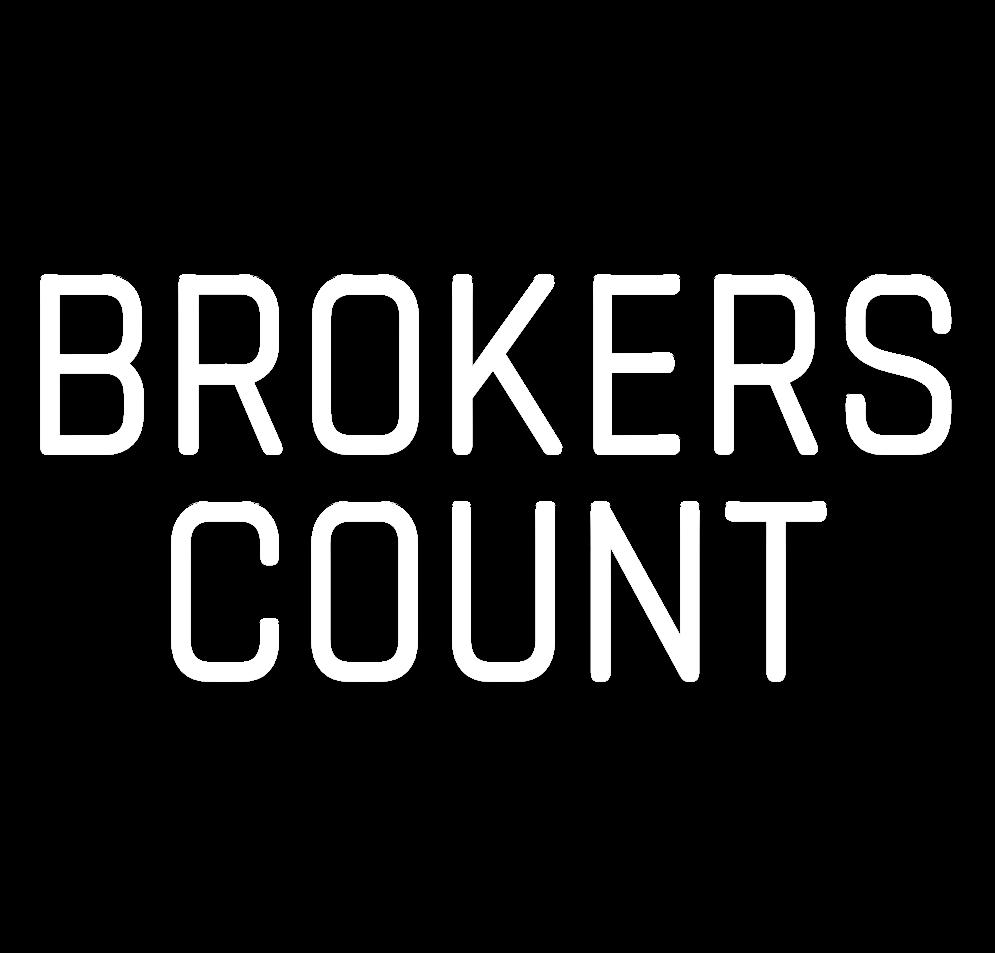


















From comps to construction costs, lenders who question everything stand the best chance of protecting themselves from fraud.

Private lenders face a material risk of fraud, and the cases have become increasingly more sophisticated. Mix in the complicated nature of lending for renovation or construction in the residential space, and you have a recipe for unwanted and challenging situations.
Some of the fraudulent issues lenders and industry leaders have faced —and are speaking up about—related to valuation and construction include:
» PRICE COLLUSION TO INFLATE VALUE
» BRIBES TO APPRAISER
» BORROWER PERSUASION/ MISREPRESENTATION
» BRIBES TO SITE INSPECTORS
» BUDGET SHORTFALLS
» EXCESSIVE BUDGET
» BUDGET AND ARV MISMATCH (OVERINFLATING TARGET CONDITION)
Fraud related to valuation and construction often involves subtle manipulation or misrepresentation, but real-world case studies reveal practical strategies lenders can use to detect and prevent these risks. Let’s take a look at three case studies, each related to either price collusion, borrower persuasion/ misrepresentation, or excessive budget.
The standard appraisal process typically uses the existing purchase contract to help determine the property’s current “as is” market value. This assumes that an independent buyer and seller have agreed on a fair price, reflecting true market conditions. Appraisers also review the property’s historical listing and sales activity to provide additional context.
Relying simply on the contract price or recent sales of the subject property to determine the As-Is Value (AIV) becomes an issue when the contract price is significantly out of line with other market pricing activity in the immediate area, especially when the home is in moderate, poor, or very poor condition.
This issue often arises in deals sourced through wholesale buyers who assign contracts. In such cases, prices may be inflated to convince a seller to accept an offer. Sometimes, an unsophisticated buyer may not realize they are overpaying. In other situations, it can be worse: The buyer may be colluding with the seller or wholesaler.
The incentive for such collusion typically involves a promise to share in the profits, which often amount to thousands, tens of thousands, or hundreds of thousands of


dollars in cash the seller or wholesaler will generate from the fraudulent transaction.
Traditional appraisals can be vulnerable to valuation issues, especially when the appraisal ordered is a “Subject to Completion” or After Repair Value (ARV) appraisal. In these situations, appraisers often focus heavily on ARV and give little attention to analyzing As Is Value with much rigor, if at all.
To protect against this, it’s important to independently assess market comparables and establish a market-based value for the property in its current condition. Lenders can take several approaches, including (1) perform that analysis internally, (2) order valuation products that apply equal rigor to both AIV and ARV, or (3) order a secondary valuation product such as Automated Valuation Model (AVM), Evaluation, or similar to gain an independent perspective of current market value.
In an example from 2023, a Florida-based lender was evaluating a fix-and-flip loan for a deal in Springfield, Missouri. The borrower provided the purchase contract to the lender at a price of $260,000, telling the lender their expectations for AIV was $260,000 with an ARV of $325,000. The lender ordered a third-party evaluation to assess the AIV, borrower budget, and ARV. The RicherValues report reviewed hyperlocal market activity, and conducted an interior inspection, assessing the AIV at $130,000 with ARV for the proposed budget (conducting a partial remodel) as $245,000, numbers substantially lower than the existing contract price (see Fig. 1).
After receiving the report, the lender conducted a deeper investigation and uncovered that the wholesale seller and the buyer were colluding to inflate the purchase price, likely to pull material
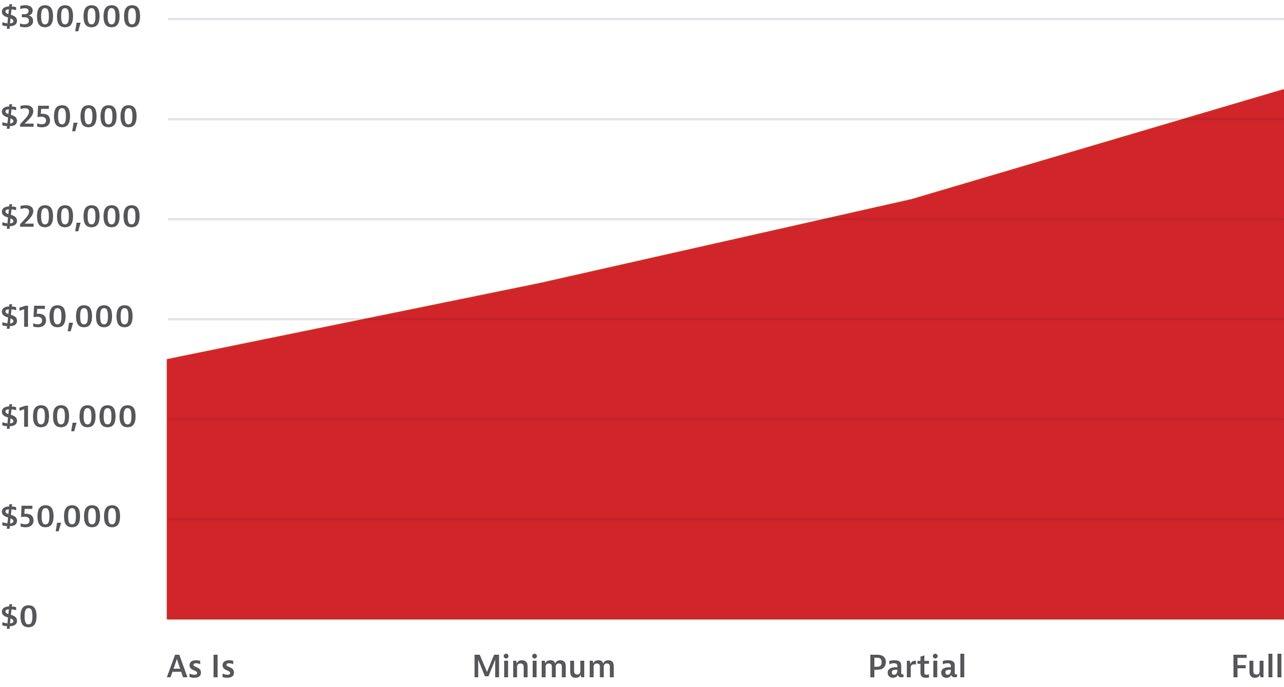
APPRAISAL CONDITION CATEGORIES
Maintained Doesn’t exist for traditional appraisals; can be aligned with C3.5 Marketable condition, with good upkeep on maintenance repair items.
cash out of the deal significantly above value. But because the lender pursued market-based diligence, the fraud was
discovered up-front, preventing the lender from a potentially damaging situation and material financial loss.
Describe the condition of the property (including needed repairs, deterioration, renovations, remodeling, etc.). C2;No updates in the prior 15 years;PER CONTRACTOR BID SUPPLIED AND CONVERSATIONS WITH BORROWER, IT APPEARS THE HOME WILL BE REMODELED TO INCLUDE A NEW ROOF COVERING, PLUMBING, ELECTRICAL, HVAC KITCHEN AND BATHROOM REMODEL. HOW WILL ALSO BE PAINTED INSIDE AND OUTSIDE AND BASEMENT AREA RENOVATED INTO LIVABLE SPACE (SUBJECT TO ITEMS).
Indicated Value by Sales Comparison Approach $ 375,000
The standard appraisal process usually includes direct interaction between the borrower and the appraiser, often during the site inspection and any communications before or after the visit. Because many appraisers lack hands-on construction experience, they tend to rely on the borrower’s input to understand the scope and intent of the proposed renovations. Using this information, the appraiser conducts the analysis and identifies comparable properties that reflect the finished condition described by the borrower.
The challenge arises when the borrower’s description to the appraiser doesn’t match the actual renovation budget provided to the lender. Borrowers are aware that most “Subject To” appraisals don’t involve detailed scrutiny of the budget, as appraisers lack the data and construction expertise to determine whether line items are realistic, inflated or missing. Many appraisers therefore base their assessments on conversations with borrowers rather than on the budget itself. As long as the borrower is being truthful, that approach works fine.
The issue arises when the borrower intentionally embellishes the budget to misrepresent what the finished product
will look like. The goal is to influence the appraisal or third-party results to secure an overinflated ARV that doesn’t match the actual work being performed.
In a Q4 2024, a client ran a test on several properties by ordering side-by-side valuation reports for the same property: one using a standard ARV appraisal and the other using a RicherValues Renovation Analysis. The results were revealing.
Traditionally, the appraisal process involves the appraiser scheduling and conducting the onsite visit, opening the door for direct communication with the borrower. In contrast some valuation providers intentionally use a bifurcated process, where the person scheduling and conducting the on-site inspection has zero involvement in analyzing the renovation budget, selecting market comps, or determining value. This eliminates a key channel for potential persuasion and significantly reduces risk.
In one example from this test, the ARV appraisal assigned a value of $375,000 based on fully remodeled C2 comparables due to “conversations with the borrower” about the proposed renovations. The appraiser also assumed the basement would be fully finished and counted as livable square footage, an assumption the documented renovation budget did not support.
(See Fig. 2 for appraisal definitions.)
The budget included no line items to finish the basement, and the scope was too limited to bring the property to a true, market-based C2 or fully remodeled condition (see Fig. 3). The budget line items and costs were only sufficient to bring the property to a partially remodeled C3 condition, leading to a more conservative ARV estimate of $288,000.
The important lesson is that a traditional “Subject To” appraisal alone is often not enough to protect against borrower manipulation or misrepresentation. For an ARV to be reliable, it needs to accurately reflect a qualitative and quantitative analysis of the borrower’s proposed renovation budget.
Lender’s can conduct this analysis internally—either through appraisal review or a separate budget evaluation— or they can engage an outside vendor that separates the site inspection from the valuation process and conducts a detailed budget review based on proven residential construction expertise.
The final example highlights an important oversight in how many lenders evaluate borrower budgets. Many rely on internal processes or third-party reports to evaluate whether a budget is sufficient. If no shortfalls are identified, the projects

are given a green light, particularly when using third-party feasibility reports.
The problem is this one-sided review can leave a major blind spot, one that savvy borrowers realize they can exploit. In a 2024 case, a national lender evaluated a proposed fix-and-flip loan for a 1,247-square-foot, three-bedroom, twobathroom single-family home in moderate (C4) condition in Henderson, Nevada. The borrower submitted a $170,000 renovation budget, and the lender’s usual third-party feasibility report approved it, citing no shortfalls and deeming the budget sufficient to complete the work.
However, the $170,000 figure amounted to $136 per square foot, which was well above the norm for a home of that size, condition, and market finish. As part of its risk process, the lender ordered a RicherValues report to analyze the renovation budget alongside the AIV and ARV. That report raised a construction fraud warning, identifying several line items that were priced significantly higher than market expectations. Based on local benchmarks, the report estimated the renovation should cost between $55,000 to $65,000, making the submitted $170,000 budget more than three times higher than the reasonable cost.
The warning helped the lender to catch the issue early and avoid a material financial loss.
The real estate field is not always friendly. Some actors in the space try to push into the gray areas or worse. At the end of the day, lenders must protect themselves.
To reduce risk and strengthen your defenses:
1 USE A MARKET-BASED APPROACH FOR ESTABLISHING AIV.
... The $170,000 figure amounted to $136 per square foot, which was well above the norm for a home of that size, condition, and market finish.”
2 ENSURE YOUR ARV REFLECTS BOTH QUALITATIVE AND QUANTITATIVE BUDGET ANALYSIS.
3 EVALUATE BUDGETS FOR BOTH SHORTFALLS AND EXCESSIVE OVERAGES.
As we’ve seen, renovation and construction deals can expose gaps in traditional diligence tools; unfortunately, bad actors know how to exploit them. Stay diligent. Stay protected. And stay on the winning side.


Rodney Mollen is the founder and CEO of RicherValues, a software and valuation services provider that delivers comprehensive intelligence on any residential asset nationwide. Mollen has more than 20 years of experience, including acquiring, managing, renovating, and selling over $1.2 billion in REO and NPLs nationwide.

We now offer our signature Certified
Private Lender Associate and Certified Fund Manager courses online, so you can earn your AAPL-backed certified status from the comfort of anywhere — and promote it everywhere.
CPLA Modules
• Intro to Business-Purpose Lending
• Legal Documentation
• Underwriting
• Loan Servicing
• Workouts
CFM Modules
• Intro to Securities
• Pros, Cons, & Considerations
• Structure
• Creation & Launch
• Administration

AAPL Certifications are members-only. Enroll online at aaplonline.com/courses for $349.



The State of Florida already requires that, at minimum, lenders provide borrowers with an annual statement of the payments they’ve made. SB 392 “Requirements of Lenders of Money” sought to clarify the contents of the annual statement, but also added a new provision: Lenders must issue a written notice of default in order to collect default interest.
Additionally, at the borrower’s request following the sale or assignment of a loan, the assigning lender must provide a loan history report. Within 30 days of assignment, the assigned lender must provide a statement to the borrower that includes detailed breakdowns of loan history and any balance changes.
Key points:
» LENDERS MAY NOT COLLECT DEFAULT INTEREST WITHOUT FIRST ISSUING A WRITTEN NOTICE OF DEFAULT.
» THE ASSIGNING LENDER MUST ISSUE A LOAN HISTORY REPORT FOLLOWING LOAN SALE/ASSIGNMENT, BUT ONLY IF THE BORROWER REQUESTS IT.
» THE ASSIGNEE LENDER MUST ISSUE
A LOAN HISTORY AND BALANCE CHANGE STATEMENT WITHIN 30 DAYS OF ASSIGNMENT. It is not clear if this statement is always required
or only triggered by “changes to outstanding balances.”
» THIS IS RETROACTIVE TO ALL EXISTING LOANS.
With a proposed start date of July 1, 2025, AAPL worked with our Florida partner organizations and contacts in the Senate to determine the bill’s likelihood of passing and next steps.
As of the time of this writing, the bill appears to have died in committee when the 2025 session ended May 2, 2025. AAPL will continue to monitor should it be reintroduced when the Senate reconvenes in 2026.

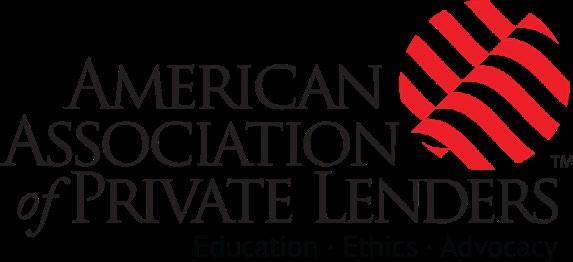
AAPL is the oldest and largest national organization representing the private lending profession. The association supports industry best practices by providing educational resources, instilling oversight processes, and fighting regulatory encroachment. Find more information at aaplonline.com.
December 2-4, 2025 | Fairmont Scottsdale Princess | Scottsdale, AZ

1,800+ SFR decision-makers
250+ expert speakers 950+ owners and operators
Where great connections lead to great deals. The SFR industry’s largest West Coast event. Boost your knowledge, your network and your business.
Save 20% with discount code REU2333APL
*IMN is offering the first 20 investors who have not attended IMN’s SFR Forums with a complimentary pass to attend. Please reach out to stacey.kelly@imn.org to apply.


When construction restarts after a standstill, it takes a nuanced set of developer skills that even some seasoned pros may lack.
JILL DUKE AND KEITH TIBBLES, LEVEL CAPITAL LLC

One of the most effective ways to mitigate risks as you take over a mid-construction project is to partner with a developer who has the right mix of specialized skill and experience. Seasoned developers bring a deep understanding of project management, construction processes, regulatory navigation, and financial structuring. They have the knowledge to identify problems, develop effective solutions, and manage the project efficiently. Importantly, they can help overcome many of the hurdles that stalled a project in the first place.
Let’s explore how selecting the right developer can drive project success, best practices for forming a partnership, and real-world case studies that illustrate successful collaboration.
Mid-construction projects often stall due to one or more of the following: financial mismanagement, poor planning, inexperience with a particular type of project, regulatory challenges, or a lack of regional knowledge.
An experienced developer can add value in a multitude of ways.
Guidance from a local professional is critical to navigate complex permitting and zoning requirements. Choose someone who knows the community politics, the accepted building design style norms, and the typical building seasonality required to complete the project in a timely manner and within budget for market positioning.
An experienced developer will also bring a trusted network of contractors and suppliers, helping to secure muchneeded resources and avoid workforce challenges and supply chain disruptions. In addition to being knowledgeable about the area, a seasoned partner can identify cost-saving opportunities without compromising quality. Their experience ensures coordination among stakeholders, enabling smoother project execution and helping rebuild lender and investor confidence in a previously troubled project.
Selecting the right development partner is crucial. Criteria to watch for include


track record and reputation, regulatory and compliance expertise, and a strong alignment of vision and values.
VALIDATE TRACK RECORD AND REPUTATION. Begin by reviewing the developer’s project completion history. Request a current resume and a detailed schedule of builds that includes project descriptions, budgets, and start and end dates from the past several years. Review marketing materials, MLS listings, and inspection reports to determine the quality of completed work.
Confirm the developer’s financial stability through a credit report, background check, and recent bank statements that validate access to capital and established credit lines. Gather multiple references and customer and vendor reviews. Speak directly with recent clients, lenders and local officials to gain firsthand information about the developer’s reputation. An experienced, reputable developer should be willing to provide this information.
REGULATORY AND COMPLIANCE. Regulatory and compliance expertise is essential when evaluating an experienced developer. Confirm the developer has direct experience with the same type of project in the target community. Ensure they have worked with local planning departments, zoning boards, and environmental agencies. Conduct thorough legal background checks as part of your due diligence; and avoid any company with a history of legal issues, fines, or code violations.
An experienced developer should be able to identify and secure grants, abatements, or tax credits to help reduce financing costs.
ALIGNMENT OF VISION AND VALUES. Begin by establishing clear strategic objectives and ensure these are openly discussed and documented. Quality of work is part of the vision. A long-tenured developer
will have pride in their work. When possible, personally walk completed sites to assess the quality of construction. Quality not only affects safety and code compliance but also resale or rental value.
Finally, the developer should demonstrate a commitment to transparency and maintain a solid reputation. Integrity reduces reputational risks for lenders.
A well-structured partnership can protect all parties involved and maximize the chances of success; an inadequate partnership, on the other hand, can negatively impact a project.
Criteria to watch for include track record and reputation, regulatory and compliance expertise, and a strong alignment of vision and values.”
The scope of work should outline who is responsible for design, permitting, budgeting, subcontracting, construction management, go-to-market strategy, or take-out financing. Document in writing milestone deadlines with specific deliverables and target
completion dates for each stage. Also specify how decisions will be made, who has authority, and escalation paths for disputes. Leaving goals or deadlines open-ended leads to future risks and, possibly, legal action. Proper expectations, consequences, and details are important for a successful project.

A joint venture agreement, performancebased compensation, equity stakes, or claw back clauses can be viable options for building a sound partnership structure.
When involved in a joint venture agreement, clearly state each party’s financial contribution and profit-sharing arrangement. For performance-based compensation arrangements, bonuses for early or ontime delivery and budget adherence are good incentives to keep projects on track and the lines of communication open. In some cases, using an equity stake is a viable option in exchange for reduced upfront fees. If claw back clauses are considered, they should include terms for recovering losses if the developer does not deliver on their obligations.
SECURE LEGAL PROTECTIONS AND EXIT STRATEGIES. Protect your investment by proactively building legal safeguards and contingency options into the project structure. To help avoid potential liens and other payment-related risks, partner with a reputable fund control company. These firms have experienced staff as well as professional processes and procedures that protect the lender.
Incorporate clear dispute resolution mechanisms into all agreements. Define specific arbitration or mediation paths to efficiently resolve disagreements without costly litigation. Another protection to include is force majeure clauses to protect all parties against unforeseen external disruptions (e.g., natural disasters, war). Finally, structure buy-sell provisions that allow one party to exit the contract under predefined terms.
Over time, developers complete multiple projects of the same type, and they become
Choosing the right development partner can make or break a project. A structured approach to due diligence, oversight, and communication helps lenders and investors reduce risk while maximizing project outcomes.
A disciplined, relationship-based approach to developer selection and oversight protects your investment and helps ensure long-term success. Choose partners who demonstrate experience, financial strength, transparency, and shared values. Then monitor consistently to keep the project on track.
Clean background check.
Verified positive references from similar completed projects.
Interviews and references indicate that culture aligns in work style and values to reduce conflict, increase trust, and increase prductivity.
Track record of on-time, comparable project completions verfied via county records, permit reviews, and certificants of occupancy in the developer’s name.
Recent, like-kind project experience to decrease risk of delay and budget overrun.
Schedule and obligations across all owned entities are free of signs of overextension that may dilute focus and resources.
Financial statements and organizational charts validate stability, liquidity/ capital access, and timely payments to subcontractors.
Local expertise and community knowledge indicate understanding deep of local building codes, climate considerations, and regional design styles.
Demonstrates established local subcontractor and supplier network.
No indication of conflicts of interest or history of non-arm’s length transactions/ self dealing that expose lender to liability.
Local weather patterns and construction cycles are accounted for in the timeline.
Budget and insurance expectations are aligned and agreed upon up front to reduce financial risk and cost surprises.
Legal counsel has reviewed all documentation, ensuring clarity and enforceability of contracts between all parties.
Communication expectations are established for weekly reports and calls, monthly reviews, and consistent on-site walkthroughs.
Real-time project visibility via technology tools such as shared dashboards and construction draw management platforms have been implemented.
For large projects: Phased project management is implemented to include short-term contracts with performance reviews prior to allowing developer’s full project control.

experts. Research, validate, and select an experienced developer for your project type. Doing so will help streamline approvals, target marketing strategies, bring deep regulatory knowledge, and ultimately result in a successful project. Examples of projects requiring a specialized developer are luxury condominiums, historic properties, and affordable housing complexes.
Luxury condominium mid-stream projects may require experience with re-permitting and redesigning. That prior experience with urban luxury housing includes knowledge of both jurisdictional and agency approvals, including the marketing strategy.
Adaptive reuse of a historic property requires a preservation-savvy developer to tackle regulatory issues. A prior history of understanding and navigating community rapport and securing landmark status may be needed to complete a unique project.
A developer with a proven track record in nonprofit or public-private partnership projects is well-suited to restructure a distressed project. Their experience enables them to optimize costs through the use of alternative materials and phased scheduling, increasing the likelihood of turning the project into a success.
Partnering with an experienced developer is one of the most effective ways to mitigate risks in mid-construction financing. These knowledgeable partners offer invaluable technical insight, local regulatory fluency, and a tested ability to rescue and complete troubled projects.
Taking the extra time needed to find the right partner is critical to successful project completion. By evaluating a developer’s financial health, track record, and alignment with your goals—and structuring the partnership with clarity and accountability—you can transform a
distressed asset into a profitable investment. In today’s unpredictable construction climate, a strategic development partner isn’t just an asset; it’s a necessity.


Jill Duke is the chief operating officer at Level Capital LLC. She has more than 20 years of experience in mortgage and construction lending, including correspondent, wholesale, and retail channels. Throughout her career, Duke has led teams in operations, risk, quality control, post-closing, and product development for regional and national banks as well as national non-bank mortgage lenders.

Keith Tibbles is a co-founder and partner at Level Capital LLC. He has more than 30 years of experience in mortgage and construction lending, serving as a director of Pacifica Bank, president of Washington Mortgage Lenders Association, and an advisory board member for Fannie Mae. Tibbles also served on several task forces for the Mortgage Bankers Association.



A strategic title partner can accelerate closings, safeguard reputation, and support long-term portfolio growth.

Not all title companies are created equal, especially when it comes to business-purpose loans. The right title partner understands the urgency, complexity, and nontraditional nuances of investment transactions. They provide more than just a service; they act as a strategic ally, offering speed, accuracy, and seamless coordination with lenders, attorneys, and closing agents to keep deals moving forward.
Let’s examine what truly sets a great title partner apart from others.
A title partner well-versed in investment properties, fix-and-flip projects, and commercial transactions brings more to the table than basic title clearance. These deals aren’t cookie-cutter; they fall outside traditional consumer mortgage regulations, often involve complex ownership or funding structures, and typically move at a much faster pace than conventional home loans.
An experienced title team knows where issues typically arise and proactively
addresses them before they impact the closing timeline. Your deal isn’t treated like a standard go-forward mortgage—it’s handled with the nuanced attention business-purpose lending demands.
As you evaluate a potential title partner, ask the following questions:
» DO YOU SPECIALIZE IN BUSINESSPURPOSE LOANS? Walk me through your experience with business-purpose loans like fix-and-flips or rental portfolios.

» HOW DO YOU HANDLE TRANSACTIONS THAT INVOLVE COMPLEX OWNERSHIP STRUCTURES OR INVESTOR GROUPS?
» WHAT ARE SOME COMMON ISSUES YOU’VE ENCOUNTERED?
» WHAT’S YOUR AVERAGE TURNAROUND TIME FOR INVESTOR DEALS?
For private lenders working across multiple states, having a title partner with true national reach is a competitive advantage. Be sure to ask a potential title partner if they have experience handling multistate transactions with centralized coordination.
Unlike local firms that operate in siloed geographies, a national title company gives you a single point of contact, consistent processes, and unified service across the board. One partner, one process— there’s no need for spreadsheets full of vendors or onboarding a new title agent
every time you enter a new market. That’s not just convenient; it’s scalable.
When deals span states, consistency matters. A centralized title partner can ensure legal compliance, and local nuances are accounted for without the delays or errors that come from juggling multiple local providers. This operational efficiency becomes a major asset as you grow.
Working with a national title company also provides a critical layer of fraud prevention. You know exactly who you’re working with on every transaction, eliminating the need to vet a new vendor each time and reducing the risk of falling victim to fraudulent actors. In today’s environment, that added peace of mind is not just beneficial, it’s essential.
One investor working on a multistate portfolio acquisition faced unexpected roadblocks when title defects surfaced in three of the properties. Because the title partner had both the reach and the expertise to act fast, the issues were resolved within days—not weeks—
avoiding costly delays in closing. This responsiveness preserved the investor’s financing window and helped them move forward with confidence.
The investor later noted that having a title team who knew the businesspurpose lending landscape was critical, not just for resolving issues but for preventing future ones.
Many title companies talk about integration, but only a few truly deliver. The right partner leverages technology to integrate with platforms, provide realtime status updates, and reduce manual work across the board. That said, we also recognize that although systems matter, so does human communication. Whether you prefer to receive updates in your production system or via a well-timed email, flexibility and familiarity are key. The best partners strike the right balance between automation and personal connection.
Look for providers who continuously invest in improving their tech stack, not just those who adopt off-the-shelf solutions. Cutting-edge tools like API integrations, e-signature platforms, and automated progress notifications create smoother workflows and reduce friction at closing. Consider asking questions like these of any title company you are considering partnering with:
» WHAT PLATFORMS DO YOU INTEGRATE WITH?
» WILL I HAVE A DEDICATED POINT OF CONTACT?
» HOW DO YOU COMMUNICATE STATUS UPDATES?
In the fast-paced world of investment lending, a revolving door of contacts leads to frustration and inefficiency. A reliable title partner provides a consistent, dedicated team that not only knows your business but also understands how you like to work. Over time, these professionals become an extension of your team. They anticipate your preferences, navigate challenges with you, and build trust that follows you even as you change roles or organizations.
This continuity means fewer miscommunications, quicker resolutions, and stronger partnerships. Your title team becomes a strategic asset that’s empowered to think ahead, troubleshoot, and support your evolving business needs.
One of the most overlooked advantages of working with the right title partner is risk mitigation. Real estate investment comes with its fair share of uncertainty, especially with regard to liens, unresolved encumbrances, or
conflicting ownership records. A seasoned title team has seen it all and knows how to spot red flags early, giving investors and brokers the confidence to proceed—or the caution to pivot. Don’t hesitate to ask a potential title partner to give you examples of how they’ve resolved complex title issues.
Their role in identifying potential pitfalls, clearing title clouds, and ensuring legal ownership transfer doesn’t just protect a single deal; it protects your reputation and your long-term portfolio health too. Simply put, avoiding a costly post-close surprise is worth its weight in gold.
When you work with a title partner you trust, that confidence translates directly to your clients. Investors can feel the difference when deals are handled smoothly, timelines are respected, and communication is proactive. In an industry where reputation matters, partnering with the right title company helps private lenders and their business analysts build credibility and strengthen their client relationships.
A dependable title team allows brokers to focus on growth and origination. They know that once the deal hits the closing table, it’s in expert hands. That peace of mind is priceless in today’s competitive market.
Private lending is all about leverage—and not just financial leverage. Operational leverage matters too. Partnering with a title company that understands your strategy, aligns with your pace, and scales with your goals gives you a strategic edge over competitors.
In a space where everyday counts, and every misstep costs money, the right
title partner isn’t just a vendor, they’re an accelerator for your business.
The best title partners don’t just support your deals today. They help position you for growth tomorrow. By staying current with regulatory changes, investing in their own infrastructure, and understanding market shifts, these companies become a future-proof asset to your business.
In a volatile market, adaptability is key. The right partner evolves with you, ensuring you’re not just closing deals but building something sustainable. From speed and scale to support and strategy, they’re an essential part of your competitive edge.


Michelle Esparza is senior vice president of national sales at Priority Title & Escrow. In this role she helps private lenders, investors, brokers, and lenders streamline real estate transactions.
Esparza has more than 30 years’ experience, including leadership roles at national underwriters and private lender-focused agencies. She is known for her deep industry knowledge, client-first mindset, and ability to navigate complex, multistate deals.
Esparza is a frequent participant at industry events and an active member of multiple real estate and mortgage associations. Learn more at PriorityTitle.com.
Tailored funding for fix & flip and ground-up construction - powered by 25+ years of experience and a team that moves fast and closes strong.
























Sekady streamlines the entire draw process—from inspection to title report. Giving you complete visibility without the headaches. • Draw Management










Great servicing teams drive loyalty and stop losses before they start.
EVAN

Private lenders spend considerable effort building, fostering, and maintaining relationships. Often, this experience allows them to understand the operational risk associated with a loan, the anatomy and warning signs associated with each loan, and when it’s time to call it quits. A servicing team, particularly one that’s in-house, provides a bridge between borrower and lender and is often on the front line of making difficult decisions.
Relationship building is essential to the success of any lender. In a hypercompetitive lending space, small factors often differentiate one lender from another. Although pricing (fees and interest rate), duration, leverage, and loan structure all play a critical role in a borrower’s decision, the overall experience and ease of the transaction create repeat customers.
This especially rings true for balance sheet lenders who service their loans in-house. Understanding a borrower, educating them, and going the extra mile to restructure a deal to get it closed (with a high probability of success and mitigation of risk) is the goal of any lender.
Understanding a borrower starts from Day One, often with the initial inquiry. A simple call, email, or video chat with a prospect
can yield a wealth of information. They can help a lender understand a borrower’s background, liquidity, experience, and goals—and how those factors fit into the lender’s guidelines and credit matrix.
The initial fact-finding mission often yields red flags and outright warnings. Some are subtle, and some are extreme: Is this a new borrower with little experience? Are they going too big, too soon (heavy vs. light rehab)? Are they investing in high-risk areas, which include risk related to insurability, crime, economic compression, or oversaturation? Are there geographical complexities related to distance? What are the current micro and macroeconomic climate conditions that will impact this particular investment?
Private lending, like many industries, is a function of sales. An intelligent, highly trained sales staff with a great product will drive originations and loan volume. The sales team cultivates the relationship with the customer, processing ensures proper documentation is provided, underwriting qualifies the loan, and closing/quality control ensures the loan makes it to the closing table without hiccups.
Now, any proud, experienced servicing team member will tell you this is where

the real fun (challenge) begins. The servicing team is the ultimate guardian of a company’s capital resources and must police and monitor the progress of each project, maintain a positive relationship (hopefully) with each borrower, and know how to spot warning signs in a complex, dynamic industry that can be suffused with fraud.
On the surface, one may think a servicing team member’s job is simple: collect interest, release draws, provide payoffs, and nothing more. That could not be further from the truth. Servicers are the

backbone of the borrower relationship, providing guidance and education on construction budgets, while navigating simple to complex change order requests, contractor matters, and the many issues that arise between business partners. In addition, the servicing department must guide loan modifications and extensions when they are (or are not) appropriate. They must do all this while managing collection issues, monitoring property insurance and tax compliance, issuing notices of defaults, and working closely with internal and external legal counsel.
Now that the loan has closed, the servicing department must “welcome” a borrower to the business and familiarize them with several important details related to both planning and process. Although many, if not all, these details should have been explained during the sales process, it is good practice to outline them in a “cheat-sheet” for the borrower to reference. Often, a lender sends a welcome letter that incorporates several important pieces of information.
Communication is vital, so be sure to include key contacts. Who does the borrower contact for a draw, what needs to be included, and what is the typical turnaround time from the initial request to the deposit of draw funds?
Additionally, costs related to the loan should be spelled out. These include the interest rate and how it is calculated (e.g., Dutch vs. Non-Dutch, inspection fees, wire fees, NSF fees, late fees, etc.). Be sure to note when interest is billed and subsequently due.
How fees will be paid also must be clarified. As part of the closing package, many lenders require borrowers to provide banking information that will be used for monthly direct ACH payments. This allows the lender and borrower a hassle-free payment transaction each month and minimizes the risk of missed payments and late fees.
It should provide a “refresher” of the borrower’s budget (Scope of Work) and, importantly, how best to follow it to maximize draw releases and minimize delays.
The welcome letter also should cover whether release of draw funds is dependent on each line item being
100% complete, installed (properly with acceptable workmanship), and on-site. If the lender allows for partial releases, it should specify what is required and how percentages are determined. Any additional documentation needed for specific repairs (e.g., roof warranties, septic certification and inspections, special permits and invoices) that must be submitted in conjunction with the inspection report should be noted as well.
Finally, details on the final holdback funds, when they are released, and what is required to access them (e.g., lien waivers, certificate of occupancy, clean/complete project, etc.) should be spelled out.
The servicing department will educate even experienced buyers (or remind them) about the details of their loan and the nuances of each lender, especially if they are new to the organization. This education allows the borrower to quickly and efficiently access draw funds and expedite their rehab.
As the eyes and ears on every project, the servicing department is tasked with monitoring the progress of each loan. They treat every draw as a mini underwrite, examine the progress in detail, and look for red flags and warning signs. The servicing

AAPL membership is the standard of excellence among private lenders and the foundation supporting the industry’s viability and growth.
Join the oldest and largest association providing for private lender education, ethics, and advocacy at aaplonline.com/join.
department should constantly communicate with the borrower, understanding each project’s budget and complexities.
Yes, first and foremost, a servicer must ensure the financial liabilities for each borrower are met—including timely interest payments, sufficient and current insurance coverage, current tax liabilities—as well as monitor for any mechanics’ liens that could jeopardize a project or a lender’s first lien status.
However, the construction draws are where the rubber meets the road. The servicing department is tasked with reviewing each draw in detail. What does a draw review consist of?
PERMITTING AND PLANS. Are the necessary and proper permits in place, and do the plans match the progress of the project? Look for warning signs. Differences in project scope can be subtle and less impactful, such as changing flooring materials. At other times, changes will severely impact the overall feasibility of a project, threatening the original ARV that the loan was underwritten to. For example, has an addition been added or deleted, a planned finished basement scrapped, or worse, an entire structure demolished?! Heed the warning signs and question everything.
SPEED AND CONSISTENCY OF DRAWS. How often are draws being taken? Every borrower is unique in their plan and scope. Some borrowers take smaller, more frequent draws, while others fund the entire project and will not take a draw until the very end. Communicate with the borrower and remain involved. If regular draws are not being taken, discuss the reason with the borrower. These conversations can often unearth issues with permits, liquidity issues, contractor woes, or disagreements between partners.

SIGNS OF FRAUD. Inspect every picture, every angle, and every detail of each draw. Unfortunately, fraud can be pervasive, especially in private lending. Whether you allow your borrowers to submit their pictures or rely on a third-party inspector, make sure what you are reviewing is the actual property on which the loan was made. Compare each draw report to the original appraisal and the original inspection/feasibility report (if available). Ensure there are clear, current exterior photos with proper address markings. Use online street view services to compare the surroundings. Releasing draw funds on fraudulent reports and pictures can and will cost a lender dearly.
CHANGE ORDERS. Exercise cautious skepticism with every change order request. Although many lenders enforce strict rules (no change orders or no change orders after the first draw), one must speak with a borrower to understand the unique circumstances for each reallocation request. A lender must use common sense, especially with smaller change requests that have little to no risk to the overall viability of the project.
Large reallocation requests often come with increased risk (and may be predicated on other underlying issues). Is the borrower attempting to “frontload” the budget, drawing more funds earlier, which will negatively impact cash flow to finish the
project? Will changes impact the overall ARV of the project (for better or for worse) and require a new appraisal? Are these changes indicative of the borrower’s (or contractor’s) lack of experience and pose threats to the successful completion of the project?
POOR WORKMANSHIP. Carefully examine the inspection report and read all notes in detail. Look for subpar workmanship, including poorly installed materials, evidence of “cutting corners,” and lack of experience, as well as the overall organization or cleanliness of the jobsite. Any obvious issues that impact the safety or quality of the renovation must be addressed immediately. The level of every renovation is different; for example, the

cost and quality of each project’s materials reflect various factors such as location and end-use. Not every project is meant to be fit for a king or queen. However, overall construction quality, standards, and safety must be adhered to in every project.
Inspection reports and detailed draw reviews are designed to protect both the lender and the borrower. Although no inspection is perfect, the lender must trust the inspector to provide an accurate examination in order to make an informed opinion about the project’s status and, importantly, to understand the warning signs when things start to go bad.
Whether you allow your borrowers to submit their pictures or rely on a third-party inspector, make sure what you are reviewing is the actual property on which the loan was made.”
Short-term bridge, construction, and renovation loans are designed to be limited in duration. The quicker the transition to exit or refinance, the more

profitable the deal is. The servicing department is tasked with understanding the borrower’s budget, timeline, and overall exit strategy. Clear, consistent communication is critical, and proactive conversations between borrower and lender


can prevent issues from escalating to the point of no return. Servicing staff must provide a comprehensive resource center, handling everything from onboarding to payoff and everything in between.
But what happens when a project begins to show cracks (literally and figuratively)? What are the warning signs? Here are some common red flags:
» LATE OR RETURNED PAYMENTS, INCONSISTENT PAYMENT METHODS, AND REQUESTS TO NET INTEREST PAYMENTS FROM DRAW FUNDS
» LACK OF NECESSARY PERMITS (OR REFUSAL TO PRESENT THEM), PERMIT DELAYS, OTHER MUNICIPALITY ISSUES
» FREQUENT REQUESTS FOR BUDGET CHANGES, REALLOCATION (E.G., ATTEMPTS TO FRONTLOAD DRAW RELEASES), RELEASES OF FINAL HOLDBACK FUNDS, ADVANCES OF MATERIALS
» LACK OF UNDERSTANDING OF THE ORIGINAL SCOPE OF WORK AND DRAW PROCESS
» INFREQUENT DRAWS OR STALLED PROJECTS
» QUESTIONABLE WORKMANSHIP, FREQUENT OR INCONSISTENT DESIGN CHANGES, COSMETIC AND STRUCTURAL WORK PERFORMED OUTSIDE THE ORIGINAL SCOPE
» ISSUES WITH CONTRACTORS AND COORDINATION WITH TRADES
» LAPSE OF INSURANCE COVERAGE, UNPAID TAXES, MECHANICS’ LIENS
» LACK OF COMMUNICATION (INABILITY TO REACH BORROWER VIA PHONE, EMAIL, TEXT, WRITTEN LETTERS)
No project is perfect, but the servicing department is designed to work with the borrower to communicate challenges and problem-solve. The key to success is knowing what to look for and assisting with a solution amenable to both borrower and lender.


Residential Transition Loans (RTLs) are for business purposes, short-term, and anywhere between six and 36 months. Typically, these loans are interest-only with a balloon payment of principal due at maturity. Due to the nature and scope of construction and rehabilitation projects, it is often necessary to extend a note past maturity and offer the borrower a loan modification. The terms of the extension (if offered at all) are at the sole discretion of the lender. The servicing department must weigh in heavily and evaluate the risks of extending a loan. Generally a lender must consider the following when offering a loan modification.
THE BORROWER’S PAYMENT HISTORY. Have payments been timely and consistent with no issues? Non-sufficient funds, late payments, and/or constant chasing of the borrower indicate liquidity issues.
STATUS OF THE CONSTRUCTION PROJECT. This includes the number of draws taken, rehab funds remaining, and how much is needed to complete the project.
THE REASON BEHIND THE DELAY. Were there permitting issues in the beginning that stalled the project? Were there contractor issues, including subpar work that had to be redone (or worse, a contractor that absconded with funds)? Have business partners had a falling out that has impacted the project’s ability to be completed?
SCOPE CHANGES. Did changes in the project’s scope significantly delay construction progress?
INSURANCE. Is the property properly insured, are all taxes paid and up to date, and are there any outstanding liens that may impact your interest in the property? Use a third party to do a deep analysis, if necessary.
PRICE. If construction is complete, and the house is listed for sale, is it listed at a reasonable price that aligns with the original ARV? Often, a borrower’s desire for outsize returns can sabotage an exit plan and lead to lender losses while looking for “pie-in-the-sky” returns.
APPRAISAL. If the plan is to refinance and hold, has the process been slow or stalled due to appraisal issues (either in obtaining, ARV, or both)? Take another look at the location and determine whether there have been economic changes to the MSA.
THE NATURE OF THE BORROWER. Has the borrower been difficult, combative, and frustrating to deal with? Is this someone you want to do business with and allocate time, resources, and capital to?
Modifying or extending a loan can be complex, and the lender must understand the many reasons that necessitate one. In a capital-restricted environment, a loan modification can often be costly to both the borrower and the lender. The fees associated with it (which usually include an increase to prevailing market interest rates) must be sufficient for the lender to cover the costs associated with tying up capital that can be deployed elsewhere.
Loans past maturity may also have implications on a lender’s borrowing base with their lending institution. In addition, the terms must not be excessive enough to hamper a borrower’s ability to complete the project and successfully exit. The servicing department’s history with a borrower and general insight is paramount when determining the terms of a loan modification.
The servicing department drafts the interest payment per usual, except

this one is different. The payment is returned as insufficient funds. Maybe there is a good reason—a bank account was closed or compromised, funds were not transferred in time, or a borrower provided a wrong account or routing number. Whatever the reason, the servicing department is responsible for remedying the issue promptly.
Often, payment issues are the precursor to larger issues. The lender issues a notice of default, giving the borrower a set time to cure the default. But the window expired without a response from the borrower.
A loan has matured, but little to no work has been done. Or worse, the project’s scope has changed so dramatically there is no conceivable way to finish with the remaining funds to be allocated. The borrower has been difficult, demanding, and appears to lack the experience, knowledge or willingness to listen. The servicing department has heard several stories, often inconsistent, as to why the project cannot be completed. Or maybe this is the second, third, or fourth loan modification. The lender has worked with the borrower several times, providing guidance and fair terms to all parties to facilitate the completion of the project.
At this point, the servicing department must sound an alarm and work with internal and external parties to devise a plan to mitigate losses. The goal is to avoid foreclosure. At this stage, loss mitigation may include:
COLLATERAL MANAGEMENT. This includes forced place insurance, monitoring for tax and other liens, and using a thirdparty property management firm to monitor, protect, and secure the asset.
REVIEWING THE NOTE. Work with legal to understand the lender’s rights, including the ability to inspect the property and call the note.
The servicing department must sound an alarm and work with internal and external parties to devise a plan to mitigate losses. The goal is to avoid foreclosure.”
EXPLORE ALTERNATIVE METHODS. What kind of loan workouts are possible (e.g., repayment plans and deed-in-lieu)?
EXPLORE YOUR CURRENT BORROWER/INVESTOR NETWORK. Often, a failing loan can be saved by a more experienced borrower in the network who is willing to take on the project.
Evaluate each situation carefully through risk analysis, and consider selling a nonperforming asset to a specialty firm.
FORECLOSURE. Understand the options and the variations in the legal systems of each jurisdiction where loans are made. Build relationships with external counsel and reach out to the network for advice and recommendations. Foreclosure puts an extreme strain on both the borrower and the lender, costing time, capital, and resources.
Finally, if the collateral is returned to the lender through a sheriff’s sale, the lender must do a cost analysis to determine whether to sell the asset as-is or complete the renovation prior to sale.
Private lending is an incredibly competitive space. Everything being equal, customer service often sets one lender apart from another. The servicing department, particularly for lenders that service in-house, builds strong relationships with
borrowers through clear, consistent communication. Strong servicing departments understand each borrower and project and the warning signs to look for. Engaging often and early, along with deep conviction and experience, allows a servicing team to solve complex problems. Customer experience is usually the most significant factor in determining whether a borrower returns. Despite all of this, loans do go bad. When they do, the servicing department is the first line of defense.


Evan Brody is the controller at Rehab Financial Group LP. Before joining RFG, he held several senior accounting and finance positions in the real estate and lending industries, and spent significant time with a large family office in New York. Brody is responsible for all servicing and accounting functions. He is a member of the AICPA and is a licensed CPA in New York and Pennsylvania.


Whether you’re selling, scaling, or handing off the reins, a smart transition starts with brutal honesty about where your business stands today.
Here’s the deal. You’ve built your lending business from the ground up. You’ve put in the work, navigated the ups and downs, and now you’re thinking about what’s next. Maybe you’re considering selling, maybe you’re wondering about a successor, or maybe you just want to ensure you’re ready when the time comes.
Here’s the kicker: This could very well be the biggest deal of your life. But getting it right isn’t about being perfect. It’s about understanding where you are, identifying what’s working, and figuring out what needs a little TLC before you make your next move. You’ve worked hard to get here, and now it’s time to take a hard look at where you stand to ensure the next chapter is just as successful.
I’m not claiming to have all the answers. I’m still figuring a lot of this out myself. But one thing I know for sure: The smartest operators in the industry are the ones who plan ahead. Let’s talk about how you can start planning your future— whether that’s a sale, a partnership, or a transition to new leadership.
At some point, you’ll ask yourself: “What do I do now?” Here’s the truth: You’re not alone in this. Whether you’ve built a solid team or are doing it solo, the first thing you need is clarity. Succession planning isn’t one-size-fits-all; it’s about evaluating where your business stands today and pinpointing areas that need work to get you to where you want to be.
To help you get started, take a look at the accompanying self-assessment tool. Remember, this isn’t about “doing it wrong.” It’s about acknowledging where you are now and identifying where you can improve for a smoother transition.
Take a few minutes to think about the following areas of your business. Rate each one on a scale of 1 to 5, with 1 being “Needs Significant Improvement” and 5 being “I’ve Got This Covered.”


Are you generating steady, predictable revenue? Do you have multiple sources of income, or is everything tied to a few key deals?
1 REVENUE IS INCONSISTENT; IT FLUCTUATES WIDELY.
2 A FEW KEY DEALS DRIVE THE REVENUE, BUT THERE’S UNCERTAINTY.
3 YOU HAVE A MIX OF STEADY CLIENTS, BUT CERTAIN DEALS STILL DRIVE REVENUE.
4 REVENUE IS MOSTLY STEADY, WITH SOME FLUCTUATION BASED ON MARKET CYCLES.
5 YOU HAVE MULTIPLE INCOME STREAMS, AND REVENUE IS CONSISTENTLY PREDICTABLE, NO MATTER THE SEASON.
(What to Look for: Steady vs. sporadic income, diversification of deals, consistency across different cycles.)
How solid is your loan portfolio?
Are your loans diversified? Do you carry any high-risk loans that could be a red flag for potential buyers?
1 THE PORTFOLIO IS RISKY, WITH FEW DIVERSIFIED LOANS OR HIGH-RISK DEALS.
2 LIMITED DIVERSIFICATION; YOU HAVE SOME HIGH-RISK LOANS THAT COULD RAISE CONCERNS.
3 A MIX OF SOLID LOANS, BUT STILL A FEW RISKY ONES THAT MAY NEED ATTENTION.
4 A GOOD BALANCE OF LOAN TYPES AND LOW-RISK DEALS.
5 STRONG DIVERSIFICATION ACROSS LOAN TYPES, GEOGRAPHIC REGIONS, AND INDUSTRIES; WITH MINIMAL HIGH-RISK LOANS.
(What to Look for: Diversification in loan types, geography, and borrower types. Risk level analysis for potential buyers.)
How well is your business running day-to-day? Are there processes in place that would allow it to run without you? Or is everything dependent on your personal touch?
1 EVERYTHING DEPENDS ON YOU—THERE ARE NO PROCESSES IN PLACE TO SCALE.
2 SOME PROCESSES EXIST, BUT YOU’RE STILL VERY HANDS-ON.
3 MOST DAY-TO-DAY OPERATIONS ARE HANDLED BY YOUR TEAM, BUT YOU’RE STILL REQUIRED TO MAKE CRITICAL DECISIONS.
4 STRONG SYSTEMS ARE IN PLACE, AND THE BUSINESS CAN RUN WITHOUT YOU FOR SHORT PERIODS.
5 THE BUSINESS RUNS SMOOTHLY WITHOUT YOU, WITH WELL-ESTABLISHED PROCESSES FOR ALL FUNCTIONS.
(What to Look for: Does the business operate independent of your daily input? Can others step in and run things efficiently?)
Do you have a strong leadership team in place that can manage things when you step away? Or does the business revolve around you?
1 THE BUSINESS RELIES ENTIRELY ON YOU TO LEAD, AND THERE’S NO REAL MANAGEMENT TEAM IN PLACE.
2 THERE’S A SMALL TEAM, BUT THEY NEED YOUR DIRECTION FOR KEY DECISIONS.
3 YOUR LEADERSHIP TEAM IS SOLID BUT LACKS EXPERIENCE IN RUNNING THINGS WITHOUT YOU.
4 YOU HAVE A SOLID TEAM, BUT CERTAIN FUNCTIONS STILL NEED YOUR OVERSIGHT.
Are there processes in place that would allow it to run without you? Or is everything dependent on your personal touch?”
5 YOUR LEADERSHIP TEAM IS CAPABLE, EXPERIENCED, AND CAN RUN THE BUSINESS IN YOUR ABSENCE.
(What to Look for: Leadership depth, autonomy of your team, ability to handle growth without you.)
Do people know who you are, and do they trust you? Is your brand solid in the market, or does it need refinement?
1 LITTLE TO NO BRAND RECOGNITION, AND YOUR REPUTATION MAY NEED WORK.
2 SOME RECOGNITION, BUT YOUR BRAND IS WEAK COMPARED TO COMPETITORS.
3 YOUR BRAND IS TRUSTED, BUT IT COULD BE MORE REFINED OR POLISHED.
4 STRONG BRAND RECOGNITION AND SOLID TRUST IN YOUR MARKET.
5 YOUR BRAND IS WELL-KNOWN, TRUSTED, AND CONSISTENTLY ASSOCIATED WITH QUALITY IN THE INDUSTRY.
(What to Look for: Public perception, brand consistency, market visibility.)
Is your business scalable? Could it grow with the right support and capital, or is it plateauing?
1 GROWTH IS LIMITED; THE BUSINESS IS STUCK AND CAN’T EXPAND.
2 THERE’S SOME ROOM FOR GROWTH, BUT SIGNIFICANT BARRIERS EXIST.
3 WITH THE RIGHT CAPITAL AND RESOURCES, THERE’S POTENTIAL TO GROW.
4 YOU CAN SCALE WITH MINOR ADJUSTMENTS AND INVESTMENT.
5 THE BUSINESS IS PRIMED FOR SIGNIFICANT GROWTH WITH THE RIGHT SUPPORT, AND THERE’S ROOM TO EXPAND.
(What to Look for: Market opportunity, scalability of operations, barriers to growth.)
Have you started thinking about your exit? Do you have a successor in mind, or are you considering a partnership or roll-up strategy?
1 NO CLEAR PLAN—THIS IS A DISTANT THOUGHT.
2 A VAGUE IDEA BUT NO SOLID PLANS IN PLACE.
3 YOU’RE CONSIDERING YOUR OPTIONS, BUT NOTHING CONCRETE YET.
4 YOU HAVE A GENERAL EXIT STRATEGY AND SUCCESSOR OPTIONS IN MIND.
5 A DETAILED EXIT PLAN IS IN PLACE, AND YOU’RE ACTIVELY PREPARING FOR THE TRANSITION.
(What to Look for: Clear plans for succession or sale, steps you’re already taking toward a transition.)
Tally your scores to see where you land. Good or bad, you’re now headed in the right direction.
31-35: A+—YOU’RE IN THE FAST LANE. But don’t let up; keep refining.
25-30: B+—TIME FOR REFINEMENT. A little fine-tuning, and you’ll be ready.
20-24: B—STRONG FOUNDATION, BUT WORK TO DO. Focus on improving key areas to level up.
15-19: C—FOCUS ON KEY AREAS. Critical areas need attention before you’re ready for an exit or partnership.
BELOW 14: D—LAY THE GROUNDWORK. You’ve got the passion, but the fundamentals need work. Start with the basics to lay a stronger foundation.
Now that you’ve taken the self-assessment, what’s next? The key is to take actionable steps based on your score. Whether you partner with a third-party professional, a trusted advisor, or your team, start making intentional moves toward that graceful exit. You’re not doing this alone. Make it happen.
Whether you’re planning to exit next year, in five years, or 10, the earlier you start, the better prepared you’ll be.



Romney Navarro is a seasoned entrepreneur and cofounder of Ragland Navarro Capital in Austin, Texas. Focused on helping private lenders scale their businesses and navigate complex capital markets, Navarro uses a scrappy, empathetic approach to partner with founders and drive growth, value, and legacy.





Smart lenders know brokers are critical partners, not just conduits for deal flow.
ALAN TIONGSON, CONSTRUCTIVE CAPITAL


The current lending landscape is as competitive as ever. Combined with growing concerns over a potential recession and what seems like a constantly fluctuating bond market, rising mortgage delinquencies continue to threaten the overall health and stability of lenders.
Spikes in interest rates, fluctuations in property value, and shifting borrower behaviors have increased the risk of early payment defaults and the rate of longterm delinquencies, adding pressure on
asset managers to continue maintaining a high-performing portfolio. Although many believe these issues could be resolved through tighter lending guidelines or underwriting, a more effective response may be through strategic, collaborative efforts between brokers and lenders.
Lenders can provide a vital source of financing in the private lending space, but their product offerings are often limited in
scope. Mortgage brokers, by working with multiple lenders, can provide real estate investors with a broader range of financing options. Therefore, mortgage brokers are in a unique position to determine the quality of the investment scenario, boost transparency, and set investor expectations.
Importantly, such a direct role gives them significant influence over loan performance, not only at the time of origination but throughout the loan lifespan. Lenders can strengthen broker relationships by empowering brokers to serve as the investor’s single point of contact. By leveraging the broker’s direct interaction with investors, lenders can gather valuable feedback, implement targeted adjustments based on that feedback, and use strategic incentives to improve portfolio performance and minimize risk. Mortgage brokers provide significant value to lenders, far beyond simply acting as intermediaries who connect the dots between lenders and consumers. They serve as essential partners who can help bridge the gap between product and real estate investor needs. This not only saves both investors’ and lenders’ time and money (and the stress of finding an appropriate solution) but also often ensures a smoother and more reliable loan origination and, ultimately, loan performance.
Through multiple, already-established networks between lenders and investors, brokers are best equipped to quickly assess an investor’s needs and product offerings. Through their understanding of the market, investor circumstances, and accessibility to a broad set of lending products, they can pair investors with the right loan while filtering out those who may not meet a lender’s credit criteria. This front-end due
diligence ultimately reduces unqualified submissions, a lender’s operational costs, and the risk of potential early payment defaults and eventual delinquencies.
More experienced and established brokers usually operate at higher volumes and maintain steady pipelines of qualified investors, helping lenders stabilize monthly revenue and volume. Their ability to source quality leads through their various networks makes these broker relationships even more critical during periods of economic downturn or housing market corrections.
Similarly, because brokers are driven by volume by client satisfaction and successful closings, they tend to gravitate
toward lenders who are consistent and reliable and offer competitive products.
As the broker-lender relationship strengthens over time, it often leads to more streamlined operations—reducing closing times and ultimately creating a better experience for brokers, lenders, and borrowers alike. Ongoing, active engagement with both lender and investor throughout the entire loan life cycle—well beyond origination—significantly drives stronger portfolio performance and greater satisfaction for lenders and investors.
For many investors, the loan process itself can feel overwhelming, especially given the different lending products
available. Brokers take the approach of being an early educator: They break down complex loan terms, explain required documentation, and simplify investor financial requirements. By setting realistic expectations up-front, brokers decrease the likelihood of unexpected conditions in underwriting, usually leading to cleaner applications and better conversion rates.
With enough time and experience, brokers eventually become more skilled at spotting red flags early in the application process. From noticing discrepancies in financial documentation to sensing potential misrepresentation from the prospective investor, brokers should be

able to identify issues before they are eventually discovered during underwriting. Although unseen by lenders, the prediligence work brokers complete before submitting a loan is essential to protecting lenders against fraud and mitigating risk.
As brokers continue to cultivate their relationship with clients, the trust and connection that is fostered provides an opportunity not only for repeat business and referrals but also for potential issue resolution and support. If an investor encounters any financial hardship, property, or tenant-related issues, they may be more likely to reach out to their originating broker rather than directly to the lender or servicer. This positions brokers to play a unique role in facilitating early communication between troubled investors and lenders, potentially resolving issues before they escalate into default, delinquency, or foreclosure.
Lenders can encourage this ongoing brokerclient engagement by providing brokers with recurring reports on their originated loan performance. Such reporting should identify loans that are still due for the current month (following the end of the loan’s grace period), loans that have recently slipped into delinquency, and a summary of their currently open loan portfolio performance. The accompanying figure provides an example of such a report.
Such reporting should equip brokers with the information they need to reengage with potentially troubled borrowers and help prevent further delinquency. Although lenders often communicate directly with borrowers to address performance issues, they should first consider the existing broker-client relationship. Initial outreach about any outstanding issues should be escalated to the referring broker. It is critical that communication to the broker is clear and complete and
includes a proposed resolution, enabling the broker to relay the message and required actions to their borrower.
In addition to maintaining low default rates, lenders can assess the performance of a broker’s portfolio across several key metrics. One important factor is file submission to origination volume. Although the exact volume will vary depending on the lender’s size and broker base, a strong-performing broker will maintain a consistent monthly flow of originations, with a high percentage— typically 80% or more—of approved submissions converting into funded loans.
Borrower credit quality is another critical indicator. A high-performing broker’s portfolio should include a large proportion of borrowers with strong credit profiles, typically reflected by FICO scores of 720 or higher, clean credit histories, prior real estate investment experience, and demonstrated liquidity.
The ability to manage file exceptions also speaks to a broker’s quality. Skilled brokers thoroughly understand loan programs and match clients to appropriate products rather than repeatedly requesting approval for loan structures that fall outside the lender’s established guidelines. Finally, responsiveness and communication, while harder to quantify, are essential traits of a top broker. Effective brokers are consistently responsive to both client and lender inquiries, keeping all parties informed and engaged throughout the transaction process and through to resolution.
For a lender, being able to evaluate and measure performance in all aspects of the business is essential. Although many of these metrics are centered on the origination of the loan (e.g., average cycle time, pull-
Data-driven tracking of early payment defaults and delinquency trends by specific broker enables lenders to deliver timely coaching, performance feedback, or, when necessary, initiate disengagement.”
through rates, cost per origination, fallout, profit), a lender’s need for reporting on lead sources and the performance of originations have equal importance. A lender’s loan origination system should capture and report which team originated the loan (inside sales vs. outside sales), broker, loan program/product, property type, original principal balance, origination date, outstanding principal balance, next due date, and current servicing status.
Data-driven tracking of payment defaults and delinquency trends by specific broker enables lenders to deliver timely coaching, performance feedback, or, when necessary, initiate disengagement discussions if a broker’s results fall outside acceptable limits. Although these limits can vary among lenders, a broker’s client base exceeding 20-25% delinquency across all their originations is generally cause for concern.
Maintaining these types of performance metrics allows lenders to provide brokers with actionable insights on how their clients are performing. This data supports informed conversations about the future direction of the relationship and helps identify opportunities for improvement.
Monthly reports further assist lenders in identifying both top-performing and underperforming brokers, while providing a clearer picture of how broker-originated loans impact overall portfolio performance.
The role of the mortgage broker in private lending is much broader than that of an intermediary, or even an originator. Strong, ongoing relationships for investors and better origination and loan portfolio performance for lenders are all ways mortgage brokers add value.


Alan Tiongson is the vice president of secondary markets and asset management at Constructive Capital, where he oversees overall portfolio performance and maintains relationships with investors. He has more than 17 years in investment property lending with roles in origination, credit analysis, processing, underwriting, developing/ overseeing lending operations, servicing, and portfolio/asset management. Before joining the Constructive team, Tiongson was the director of servicing and asset management with Finance of America Commercial.



Alex Offutt is proving that leadership starts on the ground— with standards, systems, and a mission worth building around.

Alex Offutt didn’t start Business Purpose Capital (BPC) to chase trends or undercut competitors. He launched it with something much clearer in mind: building the lending company he always wanted to work with but hadn’t quite encountered before.
After years of working across numerous finance organizations such as Countrywide, Goldman Sachs, Bank of America, Penny Mac, and Constructive Capital, Offutt had experienced the pitfalls common to these types of organizations. Processes were inconsistent. Communication often lacked context. Teams worked hard but weren’t always in sync.
“I’ve been through it all. Originations, private equity, servicing, capital markets. And every step along the way taught me something …,” he said. “I’ve always been observant of the things I viewed as negative qualities, but I’ve also remembered the positive attributes of people I worked with. Now I have the opportunity to put all that into practice.”
So when he launched his own firm, he led with a precise battle plan. From day one, he structured BPC for clean execution, choosing to serve brokers and correspondent lenders exclusively,
not retail borrowers. BPC is designed around a single promise: to be the most reliable, “radically” transparent and efficient wholesale lender in the business-purpose market.
BPC specializes in DSCR (Debt Service Coverage Ratio) loans for non-owneroccupied residential real estate. But what it really delivers—what brokers come back for—is consistency. In a volatile industry, Offutt has created a company where clarity drives performance, and culture isn’t just words—it’s operational doctrine.
Mission First. The Men Next. Then Me.
Offutt played Division I baseball at Georgetown University, and the lessons of teamwork and competition have stuck with him.
“We’re a team,” he says. “There’s no room for individuality at this company.”
Offutt doesn’t ask his team to guess what matters. He tells them. And he reinforces it with what he calls quarterly cultural initiatives.
In the first quarter of this year, he assigned BPC team members to read “The Mission, The Men, and Me,” written by retired
We’re a team. There’s no room for individuality at this company.
Delta Force commander Pete Blaber.
The book’s central hierarchy—mission first, team second, self last—maps exactly to the way Offutt leads. For BPC, the mission is serving broker clients with speed, precision, and reliability. That mission comes before individual ambition or departmental allegiances. It’s a structure that removes ambiguity. Every decision, every interaction, every trade-off is measured against that North Star: Did we serve the mission? Did we support the team doing it? Only after that comes the individual.
Inside BPC, this creates cohesion. People know what to prioritize. There’s no jockeying for position. There’s only execution of the mission, and it’s tied to a shared goal.
“If we all work together seamlessly, communicate aggressively, transparently, and concisely, you create a good client experience. Everyone is working towards that same common goal,” Offutt said.
Offutt’s clarity of mission shows up in BPC’s client model. Unlike firms that blur the line between retail and wholesale, BPC works only with brokers and correspondent lenders.
That singular focus allows the company to do more than process loans. It lets them become a true partner. Brokers don’t have to wonder whether BPC is competing with them for borrower relationships. They know they’re working with a lender that
understands their world, anticipates their needs, and operates at their tempo.
The bar for communication and execution is high. Offutt built BPC to meet that standard from the beginning—not through slogans, but through tight operations that reflect a field-ready mindset.
Inside the company, Offutt has deployed a set of principles that guide how people communicate, collaborate, and make decisions. They’re not posted on a wall, but they’re deeply embedded in how the company works.
One of the most important is what the team calls the “Fifth Grade Rule.” Every
internal message, especially emails, should be written with such clarity that a fifth grader could understand the action and the context. If someone has to guess what’s being asked or why, the message failed.
“If you’re going to send an email to somebody, the burden is on you to make sure the recipient knows exactly what it is you’re trying to accomplish with the email, from the subject line to the content of the email,” Offutt said.
Then there’s the “Don’t Waste Alex’s Time” Rule. But it’s not grounded in ego. It’s about efficiency. The rule applies across the company and reflects Offutt’s belief that incomplete or poorly prepared communication doesn’t just waste one person’s time—it wastes the whole company’s. When expectations are clear and communication is sharp, people can focus on the work, not on cleaning up misfires.
“Give me the information I need to make an informed decision,” he said. “That way you prevent decisions being made in a vacuum. Decisions made in a vacuum create natural inefficiency.”
Offutt’s leadership style blends high standards with deep presence. He’s not above the details—and that’s intentional.
He believes in knowing what’s happening across departments, not to control but to support. And he expects team members to operate the same way. That’s why BPC doesn’t allow rigid silos. Instead, Offutt describes BPC as built with “plexiglass walls.” Everyone has a lane, but they can see across and understand how their role fits into the larger mission.
“I don’t need you to worry about what’s happening inside the other silos,” he said, “but I think it’s important for you to have visibility about what’s happening.”
That shared visibility is what prevents handoffs from breaking. Underwriters understand how capital markets are pricing risk. Sales teams know what operations needs to move fast. The more each team sees, the more aligned they become.
This situational awareness reinforces speed, reduces mistakes, and keeps teams moving in formation.
BPC’s culture isn’t rigid, but it is disciplined. Offutt doesn’t hover over employees, but he doesn’t let standards slide either. Everyone on the team was hired for a reason and is expected to uphold the claritydriven culture they joined.
Mountain or beach?
Tablet or book?
Appetizer or dessert?
In-person or Zoom?
There is a time and place for both!
Text or email?
Home-cooked or takeout?
Homecooked! I love to cook!
Night owl or early bird?
Read or game?
Game night with the family. Lots of Monopoly!
Salty or sweet?
When someone joins BPC, they don’t just get a job description. The cultural onboarding includes leadership training, internal process clarity, and an understanding of how the company defines success, both for the client and the internal team. They’re not guessing what good looks like, and they’re called out publicly when they hit the mark, a tactic Offutt refers to as “teaching examples.”
That’s why new hires often find they perform better at BPC, noted Offutt. “Everybody we currently have working here is an absolute All-Star,” he said.
Offutt recognizes that BPC operates in a rapid-fire environment. “You have to be very quick to adapt to change when it occurs. You have to be able to make decisions and make them quickly.”
In addition to fluctuating interest rates and other market drivers, Offutt knows that technology advances are changing the industry. He does not, however, rush toward technology for the sake of appearances. He’s careful with it, because he’s seen how poorly integrated systems can create more confusion than clarity.
That said, he’s no luddite. BPC uses automation and systems when they enhance, rather than replace, human judgment and critical thinking. Technology at BPC is deliberate. It serves
the mission, not the other way around. If a new process or platform doesn’t serve the team’s ability to execute better or faster, it doesn’t get implemented.
For Offutt, competitive advantage comes down to three variables: product, process, and price. In his view, being a market leader in any one of the three can position a company for success, but two of them are far more stable than the third, he says.
Product and process, he believes, can be engineered, refined, and scaled. Price, on the other hand, is constantly shifting. Relying on it as a lead differentiator can leave a company exposed. The lowest price can be undercut. But a product that solves the right problem, delivered through a process that consistently performs, creates loyalty.
Offutt isn’t trying to reinvent lending. He’s deliberately trying to improve it with sustainable, repeatable processes. Much like the 3M model he admires, his focus isn’t on chasing what’s new for novelty’s sake, but on making what already works, work even better.
For Offutt, one of the most gratifying parts of his career has been building






up others. He takes pride in having trained and mentored some of the top-performing professionals in private lending today, some of whom started with no prior experience.
At BPC, that mentorship continues. The team isn’t built by accident. It’s shaped by patience, repetition, and the willingness to teach not just what to do, but why. The approach, he says, requires “suffering the slings and arrows” at times.
“I like to lead by example. I need to lead from the front,” Offutt said, noting that he wouldn’t expect anyone on the team to do something he hasn’t done or isn’t willing to do.
And when those people rise, Offutt doesn’t take the credit. He sees their success as a reflection of the culture, the systems, and the belief that high standards combined with transparency create growth.
Offutt’s view of entrepreneurship is deeply historical. He draws inspiration from the likes of Rockefeller, Carnegie, and Ford—not just for their business success, but for their vision that made them architects of industry.
With BPC, he sees the opportunity to do just that—particularly with the 30-year DSCR product that is still evolving.
“The product only began to exist about eight years ago,” Offutt says, noting that it’s changing the game for real estate investors, and by extension, for renters and future homeowners.
When asked about legacy, Offutt didn’t mention valuation or deal count. He spoke about housing and the people who live in it.
Through BPC, he’s helping real estate investors finance rental properties all over the country. But what that means, in human terms, is something bigger: creating housing stock that’s clean, stable, and accessible for families who may not yet be ready or able to buy.
As he explains it, BPC’s borrowers aren’t just doing deals. They’re putting roofs over people’s heads. And BPC’s financing helps them do that more affordably and more reliably.
As BPC grows, Offutt isn’t chasing scale for its own sake. He’s chasing clarity at scale: A system that works as well at 50 people as it did at five. A culture that holds under pressure. A team that knows how to win together—and why it matters.
He believes the private lending industry is only beginning to evolve and that products like the 30-year DSCR loan have the power to reshape access, affordability, and long-term community investment.
His role in that future won’t be defined by a headline or a revenue milestone. It will be defined by whether he helped create homes—better homes—for the people who need them most.
Not just a company that closes loans.
But a company that opens doors.





CV3 Financial delivers financing beyond the conventional DSCR and fix-and-flip options. We offer tailored real estate financing solutions designed to meet the real-world challenges of today’s market.
Partnering with CV3 gives you access to a wealth of resources and expertise that can transform your business. Let’s work together so you can offer the best possible solutions to your real estate investor clients:
Give your clients up to 80% cash out on the established equity of their investment properties.
Enable your developers to access the funds they need to bring their projects across the finish line.
PORTFOLIO REFINANCE
Help your clients refinance their portfolio under one loan to improve cash flow and free up capital for new investments.
FIX AND FLIP
Leverage short-term financing to help your clients turn undervalued properties into profitable sales.
DSCR
Choose short-term interest-only ARM or 30-year principal and interest rental property financing.
JUMBO LOANS
With loan amounts up to $5,000,000 - give your clients access to more funds without conventional barriers.



With DSCR loan volume up 105% year-over-year, top performers aren’t riding the wave—they’re creating it through better execution and infrastructure.
NEMA
DAGHBANDAN, ESQ., LIGHTNING DOCS

Lightning Docs is a SaaS platform founded by the partners at Fortra Law —recently rebranded from Geraci LLP—the nation’s largest private lending law firm. The platform is used
by nearly 300 total lenders, including more than half of the top 50 private lenders nationally and six of the current top 10. This combination of depth and breadth offers a unique window into
the private lending market. This article recaps first quarter 2025, highlights national trends through April, and takes a close look at regional activity across the top bridge and DSCR markets.

A bridge loan is any loan with a duration of 36 months or less utilizing interest-only payments for the duration of the term and containing a balloon payment at the end of the loan. Bridge loans are commonly referred to as residential transition loans, fix-and-flip, non-owner occupied, hard money, or in other terms that describe a short-term loan generally secured by a residential property for investment purposes.
In 2024, Lightning Docs users generated more than 20,000 bridge loans. Although bridge loans are
generally considered to be for construction purposes, a full 38% of bridge loans generated in 2024 did not contain any holdback or reserves for construction.
DSCR loans are 30-year term loans secured by rental properties. DSCR stands for Debt Service Coverage Ratio, which identifies that the primary underwriting for these loans is done by dividing the monthly net operating income of the property by the monthly debt service.
In 2024, Lightning Docs users generated more than 17,000 DSCR loans across 50 unique private lenders.
Private lending showed no signs of the typical early-year slowdown in first quarter 2025. Bridge loan volume was up 48% year-over-year (YOY), and DSCR loans surged 108% YOY.
But the growth story is nuanced. When reviewing data aggregator Forecasa’s statistics and tracking the YOY progress of the top 100 national private lenders, 51 of the leading lenders either decreased or were exactly flat when comparing first quarter 2025 to first quarter 2024. Looking solely at file counts for the top 100 lenders, volumes increased by 6% over the same period.
With market volatility still top of mind, it’s more important than ever for private lenders to keep an eye on rate movements and market signals. Encouragingly, despite recent swings in equity and debt markets, the secondary market for private lenders remains strong. If that holds, loan volume could continue its upward trajectory.
Let’s now turn to the latest trends through April.
BRIDGE LOAN VOLUMES. April 2025 was once again an all-time high for bridge loan transactions written in Lightning Docs. With a total of 2,634 loans, April
marked the fifth month in a row that has set a new high. When tracking the same 165 users who signed up to use the system on or before January 1, 2024, we see a 48% YOY increase comparing volumes from 2025 to 2024 (see Fig. 1).
DSCR LOAN VOLUME. Although growth for bridge loans has been impressive, the increase in transactions for DSCR loans remains the standout. DSCR loan volume once again set records in April with 2,504 loans in the system from the entire user base. When looking at the same 37 users who started using the system on or before January 1, 2024, DSCR volume was up a staggering 105% YOY (see Fig. 2).
BRIDGE INTEREST RATES AND AVERAGE LOAN AMOUNTS. National bridge loan interest rates dropped again in April, from 10.74% to 10.65% (see Fig. 3). With 11 decreases over
the last 12 months, bridge loan interest rates are now 85 basis points lower than this time last year. Median rates held steady at 10.5%, narrowing the gap with the average.
Rate distribution shows 35% of loans falling between 10% and 10.99%, with an average April interest rate of 10.65%. A shift toward loans priced between 9% and 9.99% appears to be the driving factor in the overall decrease in averages. One key factor is that the dominant bridge loan market, Los Angeles, saw its average interest rate drop by nearly 50 basis points in April.
On the other hand, average loan amounts ticked up. The average climbed to $664,287, the highest since December, while the median held at $350,000. This points to a healthy mix: While large deals are lifting the average, most lending remains focused on mid-range transactions.
SUBSCRIBE TO WATCH LIVE
The State of the Industry is a live broadcast, recapped in print. Register via AAPL’s newsletter. aaplonline.com/friends
WATCH RECORDINGS HERE (AAPL members only.) aaplonline.com/videos/
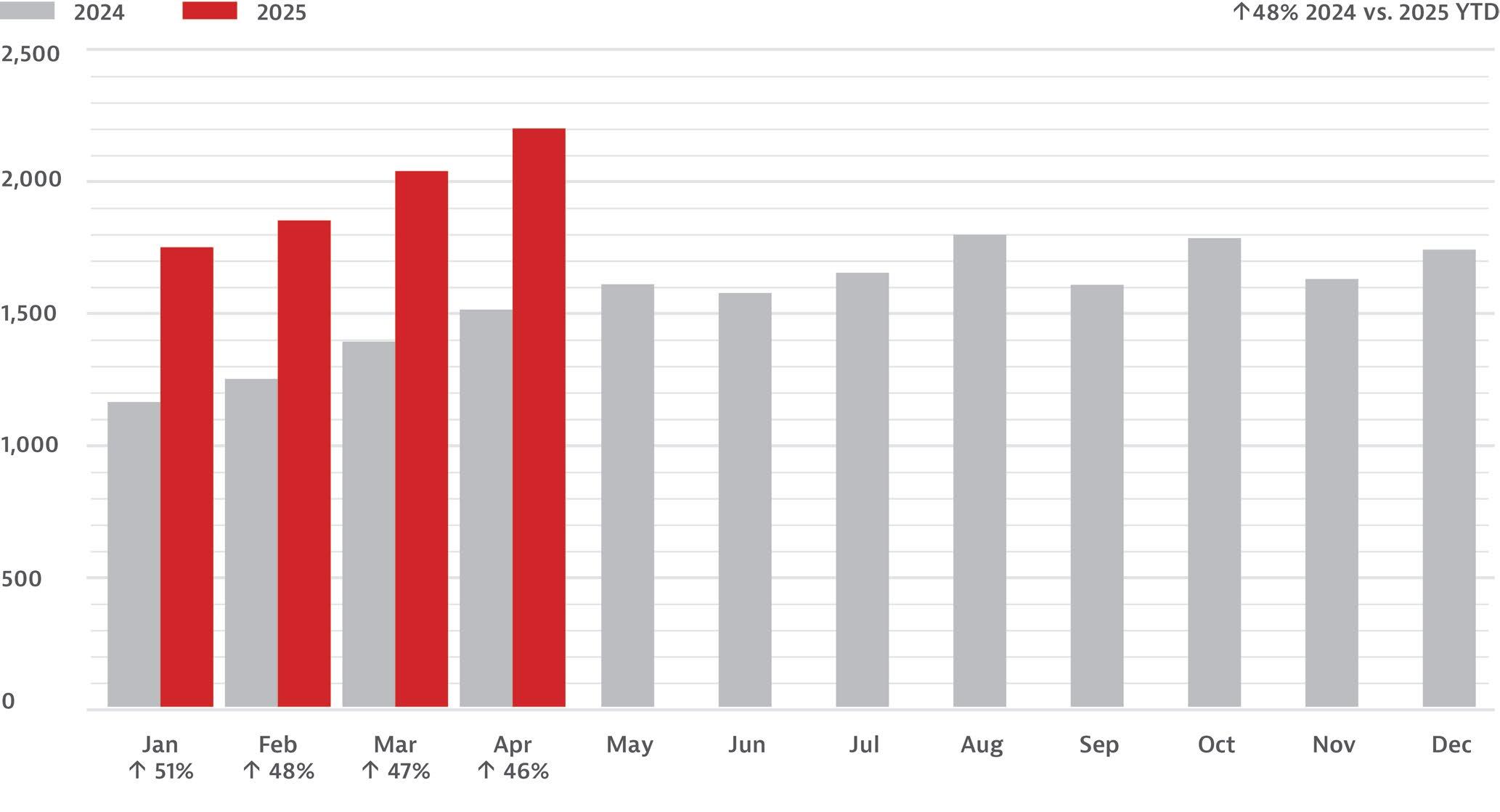
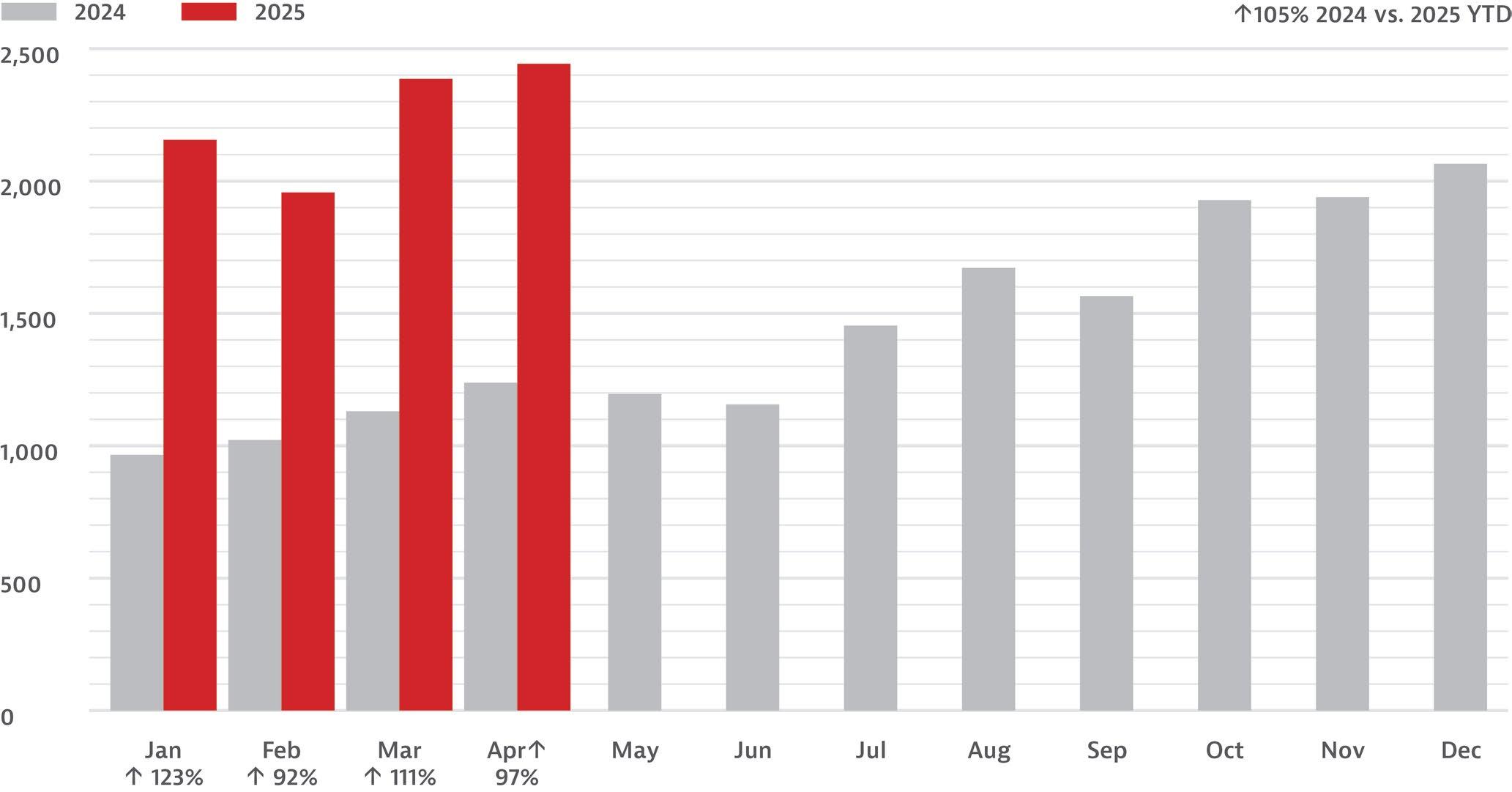
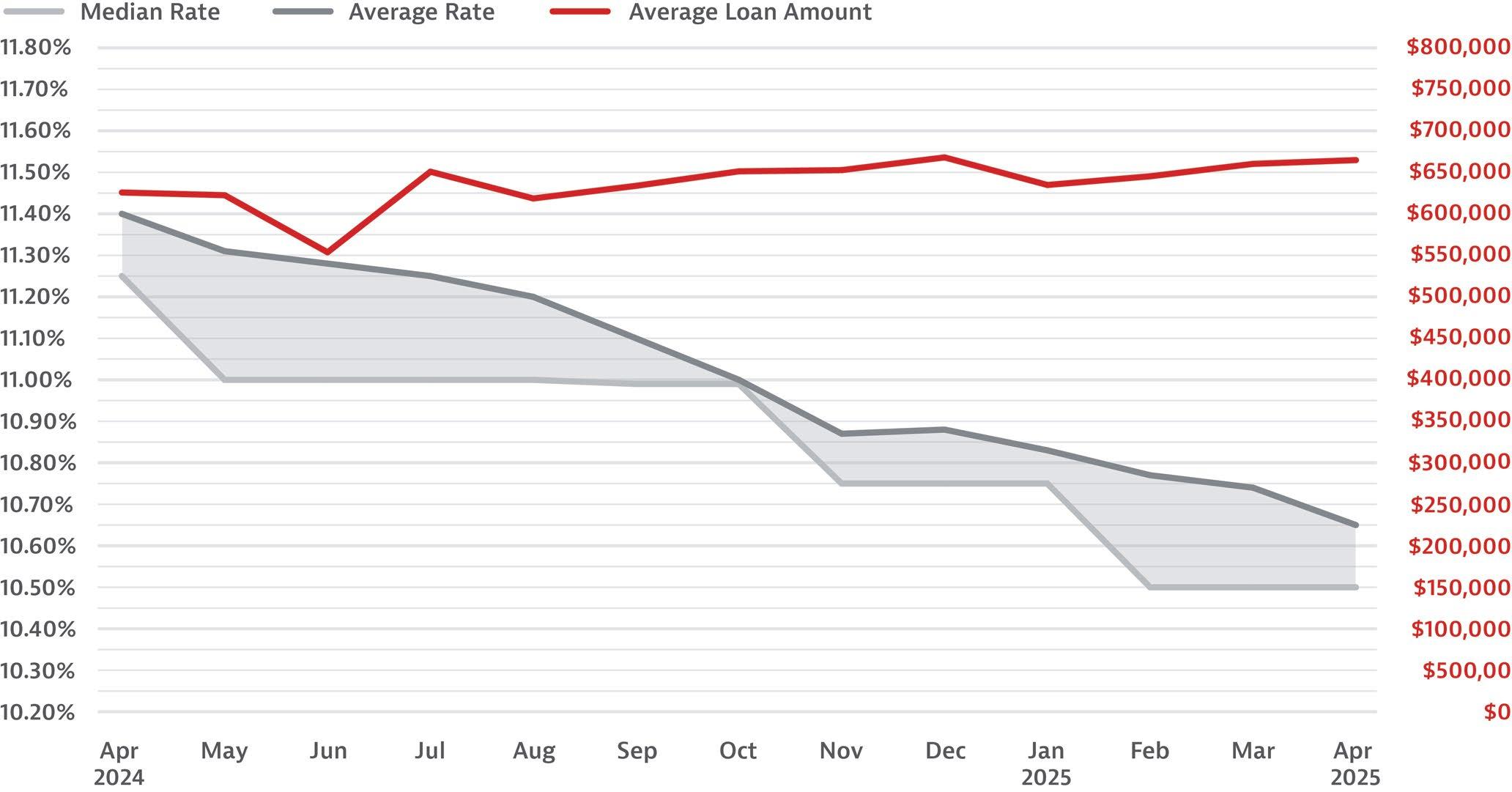

DSCR rates fell four basis points to 7.52%, the fourth consecutive month after a sharp increase during the closing months of 2024 (see Fig. 4). Average loan amounts saw a slight dip to $317,604.
Although more than 63% of loans are still priced between 7% and 7.99%, the data is showing a meaningful shift toward lower rates. Similar to bridge loans, April’s top market for DSCR
loans, Philadelphia, saw average interest rates drop by 19 basis points.
Despite a tumultuous month for federal economic policy, the 10-year treasury showed no movement from March to April, staying put at 4.28%. DSCR loans and consumer mortgages went in opposite directions, with consumer mortgages increasing by eight basis points, while DSCR rates dropped by four. As a result, the spread between DSCR loans and the 10-year treasury tightened to 3.24%,
signifying confidence in the market, although not as aggressive as in fourth quarter 2024, when spreads were much closer to 3%.
TOP BRIDGE LOAN STATES. Through the first third of the year, the top 10 states for bridge loans have remained consistent with 2024. California, Florida, and Texas still lead, while North Carolina, New Jersey, and Pennsylvania have climbed the ranks (each up two notches). The complete top 10 list, ranked in order from top to bottom in 2025, include California, Florida, Texas, North
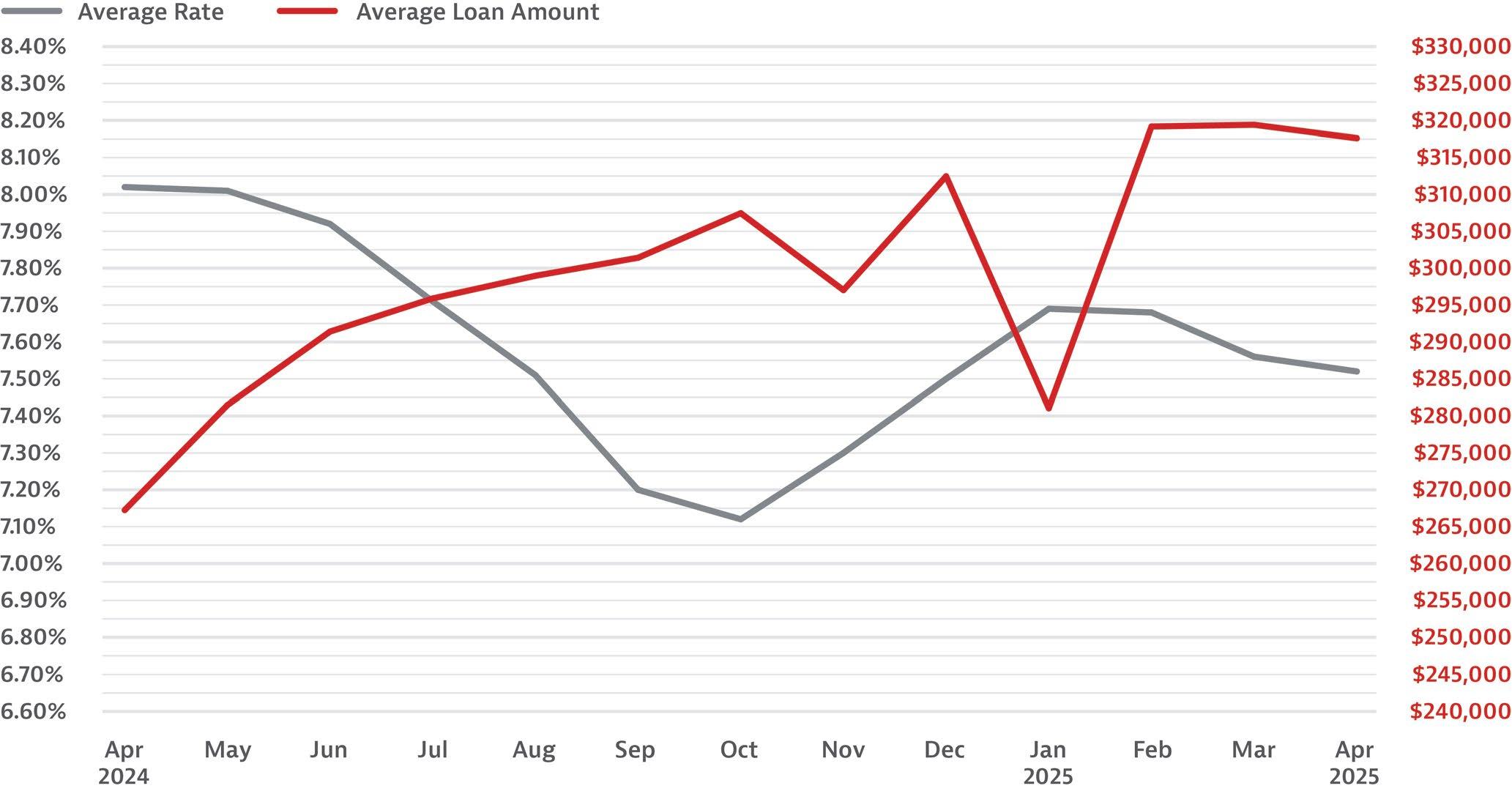

Carolina, New Jersey, Illinois, Georgia, Pennsylvania, Massachusetts, and Ohio.
One factor worth noting: Each of these states ranks among the top 11 by population. The one major outlier is New York, which continues to lag due to its challenging mortgage lending dynamics.
TOP DSCR LOAN STATES. The top 10 states for DSCR loans have also held steady since 2024. Florida leads so far in 2025, with New York and Georgia making gains (both up two spots over 2024). For lenders looking to expand into
new markets, Washington and Massachusetts stand out as highly populated states where DSCR volume remains relatively low. The complete top 10 list through 2025 includes Florida, Pennsylvania, Ohio, Texas, New Jersey, New York, California, Georgia, Illinois, and North Carolina.
HOT SPOTS IN BRIDGE STATES. Although it’s helpful to know which states are hot spots for bridge loans, knowing exactly where the best markets within these states are located offers even better insights. Let’s take
a look at the counties recording at least 20 bridge loans this year within the top five states—California, Florida, Texas, North Carolina, and New Jersey (see Figs. 5-7).
Some, like California and Florida, have many counties that are driving volume; others, like North Carolina and New Jersey, have just a handful of counties over this threshold.
Orange County, California, saw the biggest increase in the number of transactions from March to April, along with average loan amounts increasing over $300,000 (see Fig. 5).

Florida offers the broadest opportunity for bridge lenders with 15 counties over the 20 loan threshold (see Fig. 6). Each of the top three counties saw their number of transactions rise in the past two months.
Texas markets have a high variance when it comes to average loan
amounts. Dallas, the top market, saw the average amount decrease nearly $300,000 in April, and Denton’s average loan amount dropped by 67%.
In North Carolina’s top market, Mecklenburg, sharp decreases in average interest rates have coincided
with an increasing number of loans each of the last three months.
New Jersey is the only state in the top five without a clearly defined top market. So far this year, Camden and Essex have alternated months as the top market in the state (see Fig. 7).


HOT SPOTS, DSCR MARKETS. Similarly, let’s look at the top markets that make up the leading DSCR states—Florida, Pennsylvania, Ohio, Texas, and New Jersey (see Figs. 8 and 9). As an overall trend, DSCR markets show much less volatility in average interest rates and loan amounts.
DSCR loans across Florida’s top counties are consistently priced. Average interest rates across the last three months for all 11 counties shown fell between 7.14%-7.86%. Orange represents the median county for average loan amount in 2025 when reviewing the 106 counties that had at least 20 DSCR loans through April (see Fig. 8).
Pennsylvania’s top counties serve as a bellwether for the national average interest rate with Philadelphia matching it at 7.68% in February
and Alleghany matching the 7.52% national average in April.
Ohio remains a key state for small volume loans. Of the 106 counties with at least 20 DSCR loans this year, Cuyahoga, Summit, and Stark counties are all among the top 10 for the lowest average loan amount.
Many of the Texas counties lie near the median loan amount when looking at top markets. A review of the 106 counties with more than 20 DSCR loans this year shows Galveston, Harris, Montgomery, Dallas and Tarrant all landing within 10 spots of the median county (see Fig. 9).
As an overall trend, DSCR markets show much less volatility in average interest rates and loan amounts .”

FIGURE 10. NEW JERSEY DSCR COUNTIES >20 LOANS
Macroeconomic conditions impact all lenders equally, but outcomes vary widely. Half of the top private lenders saw volumes decline or stay flat in the first quarter of this year; the other half grew.”
Looking at all the counties in these top five states, Essex and Hudson in New Jersey stand out, with average loan amounts more than double the national average, by far the highest among this group (see Fig. 10).
Macroeconomic conditions impact all lenders equally, but outcomes vary widely. Half of the top private lenders saw volumes decline or stay flat in the first quarter of this
year; the other half grew. The difference wasn’t the economy; it was execution.
Lenders are well served by focusing on better execution in their businesses, including streamlining processes. At Lightning Docs, we consistently see our users outperform their peers by wide margins. The reasoning is easy to appreciate: Lenders focused on building strong foundations from which to scale will continue to dominate in uncertain markets.


Nema Daghbandan, Esq. is the founder and CEO of Lightning Docs, a proprietary cloud-based software that produces attorney-grade business-purpose mortgage loan documents for shortterm bridge, construction, and other temporary financing, and term financing associated with DSCR rental loans.
Lightning Docs is the official loan documents of AAPL. As a real estate finance attorney and partner at Fortra Law—recently rebranded from Geraci LLP—Daghbandan has unique expertise in understanding the needs of private mortgage lenders. For more information about Lightning Docs, visit lightningdocs.ai.


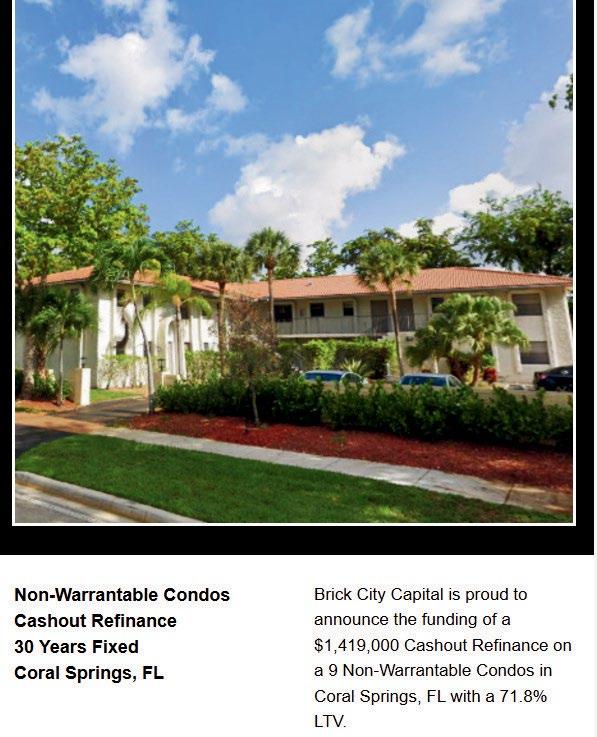

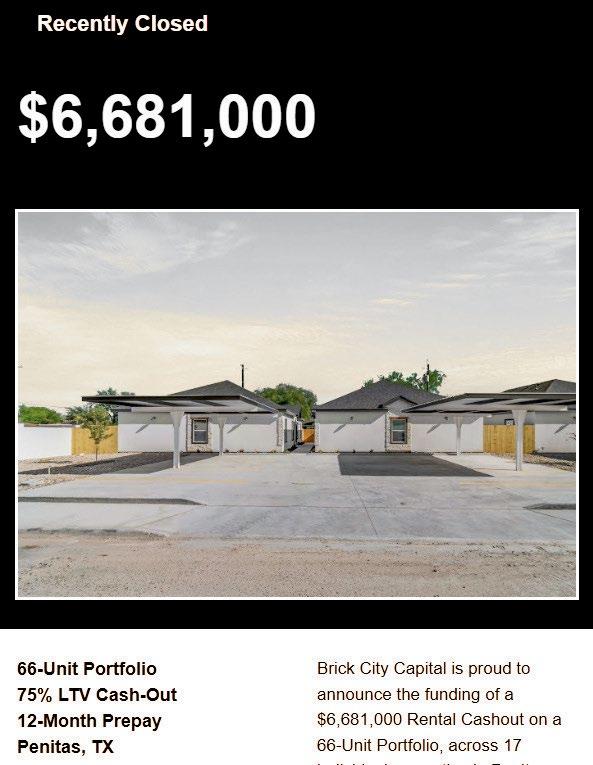





Underwriting corrections and stronger sponsor quality have fueled a sharp rebound in multifamily residential transition loans while other segments remain volatile.
SAM KADDAH, LIQUID LOGICS, AND ALEKSANDRA SIMANOVSKY, ADIGE ADVISORY

In the historically opaque and fragmented world of residential transition loans (RTLs), standardized performance data has been difficult to come by. But thanks to advances in digital infrastructure and a growing push toward institutional transparency, this is beginning to change.
Since 2014, Liquid Logics has recorded more than $40 billion in short-term real estate loans originated by more than 300 private lenders. This normalized, loan-level data—sourced through direct API integrations with lenders and servicers—offers a uniquely detailed view into the short-term, real estate-backed lending market. In 2024, the dataset reflects roughly 25% of the estimated $60 billion in RTL originations, offering investors valuable insight into market trends and borrower behavior at scale.
Figure 1 shows nationwide and statelevel performance metrics, dissecting patterns in delinquencies, defaults, losses,
and extension behavior, while offering commentary on key differences between residential (1–4 units) and multifamily/ commercial (5 or more units) asset classes.
Multifamily loans, though typically larger in size, post slightly lower default (6.9% vs. 8.1%) rates, suggesting better borrower vetting, stronger property fundamentals, or more institutional-quality underwriting in this segment. However, they also experience longer average extensions (18 months vs. 15 for residential), reflecting the more complex nature of repositioning larger assets and often lengthier sales or refinance timelines.
The parity in 60 days or more delinquency rates (13% for both asset types) underscores a shared sensitivity to macroeconomic conditions (e.g., interest rate fluctuations and housing demand). Still, the faster transition from delinquency to default in residential RTLs may reflect thinner borrower reserves or tighter servicing timelines.
During the past five years, defaults on multifamily loans initially exceeded those of single-family loans in 2020 and
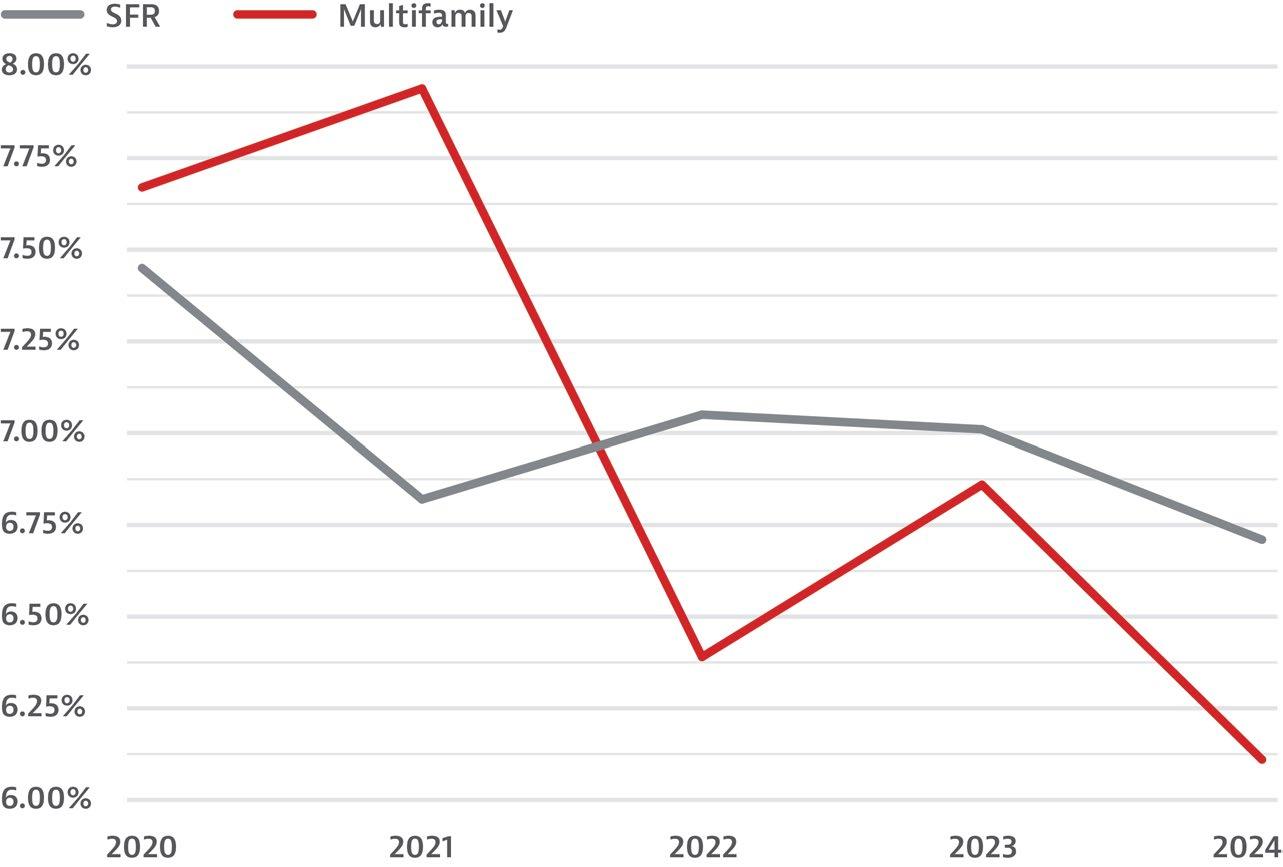
2021. But since 2022, multifamily default rates declined sharply and consistently. By 2024, the default rate for multifamily loans dropped to its lowest point in the observed period, significantly below that of single-family loans (see Fig. 2).
This marked improvement in the multifamily RTL trend suggests more than just market stabilization; it points to a structural correction. The sharp early defaults exposed a lack of underwriting expertise among certain sponsors and lenders who did not grasp the complexities unique to the multifamily asset
class. As a result, many of these lenders either exited the space or were forced to restructure, replacing leadership and liquidating poorly underwritten loans to restore portfolio health.
The subsequent withdrawal of these lower-quality originators helped reset underwriting standards across the sector. The improved performance since then can be attributed to a combination of stronger sponsor quality, tighter credit standards, and a deeper understanding of the nuanced underwriting required for multifamily assets.


These changes, coupled with growing investor demand that facilitates more stable exits, have driven multifamily loan resilience. In contrast, single-family loan defaults have remained relatively stable but did not experience the same level of improvement, highlighting the growing relative strength of the multifamily segment within an otherwise opaque and fragmented lending landscape.
In-depth RTL performance analysis is featured for California and New York markets because these two states offer both contrast and similarity. Both states are characterized by high-value properties with strong housing demand and similar borrower profiles. However,
the stringent foreclosure processes in New York and extended resolution timelines significantly impact loan resolution timelines upon liquidation. These shared and differing factors provide valuable insight into how regional dynamics influence RTL risk and strategy.
In California, multifamily loans dramatically outperform residential loans in credit performance. Delinquencies and defaults are nearly half those of residential properties, and losses are an order of magnitude lower, even though average loan balances are higher (see Fig. 3). This

suggests more stable rental demand or stronger operator quality in the multifamily segment, which often involves experienced sponsors with institutional backing.
Interestingly, extension periods in both categories are relatively short in California, possibly reflecting faster permitting, more liquid real estate markets, or aggressive servicing practices that favor quick resolutions. That said, residential losses totaling $400 million highlight the risk of borrower-level distress, particularly in volatile or overheated submarkets.
In contrast to California, New York’s data reveals more mixed performance (see Fig. 4). Multifamily loans, though larger in size, are underperforming relative to residential assets. With higher delinquency and default rates, these loans likely
reflect continued challenges in urban rental markets, regulatory constraints, or post-COVID shifts in demand. New York’s highly regulated eviction environment may also increase credit risk, particularly for multifamily operators dependent on consistent rental cash flow.
Extension periods remain long for both asset classes, suggesting either borrower-requested delays or lender hesitancy to force resolutions in a legally complex environment. Residential loans appear more resilient in this geography, possibly due to strong

underlying demand for single-family homes or smaller-scale rehab projects.
In California, performance metrics deteriorated between 2021 and 2023, especially for multifamily assets (see Fig. 5). Delinquencies and defaults rose sharply, and losses more than doubled in both asset classes. Surprisingly, average extensions fell, perhaps reflecting more proactive servicing strategies, tightened exit timelines, or lenders preparing for market volatility by accelerating resolution processes. This drop in extension periods may also signal a shift toward institutional best practices or reduced borrower flexibility. New York, in contrast, showed greater stability and even improvement in

some residential metrics (see Fig. 6). Losses declined significantly, and average extensions were halved, pointing to quicker project turnaround or enhanced borrower capabilities. Multifamily loan metrics remained fairly stable, though the modest increase in defaults suggests persistent stress among large-scale operators, possibly due to higher operating costs or tenant churn in urban centers.
TAKEAWAYS: RESIDENTIAL VS. MULTIFAMILY RTLS
The data reveal important distinctions between residential and multifamily RTLs that go beyond surface-level
Surprisingly, average extensions fell, perhaps reflecting more proactive servicing strategies, tightened exit timelines, or lenders preparing for market volatility by accelerating resolution processes.”
performance metrics. These key takeaways highlight how asset type, geography, and borrower behavior interact to shape credit outcomes and risk exposure.
LOAN SIZE AND LOSS EXPOSURE. Multifamily loans consistently carry higher balances,
which increases the dollar impact of each distressed loan. However, their more stable performance in several geographies offsets this risk to some extent.
DELINQUENCY PATTERNS. Residential loans exhibit greater volatility, particularly
Reliable, loan-level data enables lenders, investors, and policymakers to assess risk more accurately, allocate capital more efficiently, and develop responsive underwriting and servicing strategies.”
in markets with a high concentration of smaller or newer investors.
Multifamily performance varies more by geography and policy environment, particularly in states with strong tenant protections or rent control.
EXTENSION BEHAVIOR. Longer extensions in multifamily deals suggest more complex repositioning strategies and longer lead times to refinance or sell. In contrast, residential assets (often “fix and flip”) are quicker to turn but are more sensitive to housing market cycles.
GEOGRAPHIC VOLATILITY. California’s sharp performance decline in 2023, especially in multifamily, underscores the importance of market-specific risk. New York, on the other hand, displayed surprising resilience, particularly in the residential segment.
DELINQUENCY VS. defaults. There is a clear pattern that delinquency levels do not equate to corresponding default levels. It may reflect the resiliency and flexibility of the industry and willingness to provide flexible payment terms, extensions, and close mentoring of borrowers to see loans to performance and successful payoffs.
As the RTL sector matures into an increasingly institutional product and attracts greater institutional capital, access to standardized, granular data will be crucial.
The distinctions in performance across geographies, time periods, and credit factors will highlight how credit risk is shaped by borrower profile, project complexity, market conditions, and policy environment.
Reliable, loan-level data enables lenders, investors, and policymakers to assess risk more accurately, allocate capital more efficiently, and develop responsive underwriting and servicing strategies. In a market where performance can shift quickly and vary widely by region and asset type, the ability to recognize patterns (e.g., rising default rates, shortening extensions, or growing loss severity) is critical to managing portfolio exposure and pricing credit appropriately. Without credible, consistent data, stakeholders are left to navigate the RTL space with guesswork. With it, the market has the foundation to scale responsibly and withstand economic cycles with greater resilience.


Sam Kaddah is the president and CEO of Liquid Logics. With his broad background in complex environments, he is skilled in building consensus, producing results, and streamlining operations. His career is characterized by leadership that achieves efficiencies and revenue while maintaining quality. Liquid Logics provides fintech and NextGen SaaS for the private equity lending space.

Aleksandra Simanovsky is the founder of Adige Advisory, which guides the private lending industry in navigating institutional capital markets. A finance professional with more than 20 years’ experience, she specializes in credit risk, underwriting, securitization, and structured finance and capital raising.
Simanovsky pioneered the first-ever rated Residential Transitional Loans (RTL) securitization, securing institutional investor acceptance. At Toorak Capital Partners, she spearheaded strategy and capital markets initiatives.
As vice president at Deutsche Bank, she led over $40 billion in commercial real estate securitizations.
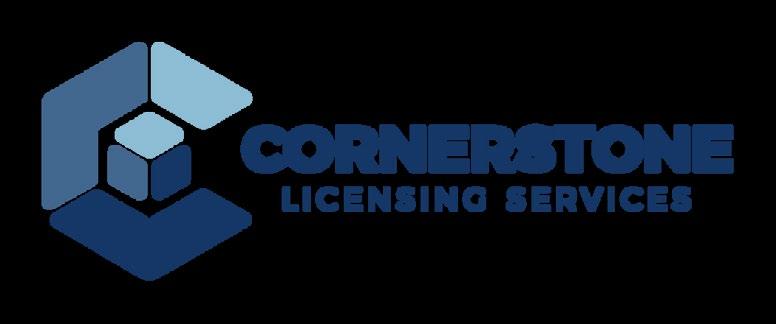







Origination numbers are up even as loan amounts level off.
Following a rate cut in December 2024, the Federal Reserve has maintained the same federal funds target rate for the first four consecutive FOMC meetings in 2025. They remained cautious due to inflation concerns and economic uncertainties.
First-quarter 2025 saw a 13% increase in private lending mortgage origination units
compared to first-quarter 2024 (see Fig. 1). Total origination volume also increased by 10%. DSCR (Debt Service Coverage Ratio aka 30/40-year term loans) experienced an increase in originations of 43% from first-quarter 2024 and saw a 25% increase in total number of private lenders offering DSCR loans. Overall, the total private lending origination volume for first-quarter 2025 surpassed $33.2 billion compared to first-quarter 2024 finishing at $30.7 billion.
The average private lending mortgage loan amount dropped slightly from $517,000 to $508,000, but the overall increase in transaction count drove a year-over-year (YOY) increase. Genesis Capital and Anchor Loans saw the biggest increase in average mortgage amount, with 26% and 14% increases YOY, respectively. Six of the top 10 private lenders (by origination units) experienced a contraction in average mortgage amount YOY.
METHODOLOGY
Forecasa collects, cleans, and analyzes residential real estate data from county land records, focusing particularly on the private lending sector. The company standardizes the names of parties and the terminology used for transaction types, providing a clearer view of daily market activities.
Forecasa defines a “private lender” as a mortgage originator that provides specific types of loans to residential investors (short-term fix-to-flip or bridge, 30-year rental/DSCR, groundup construction, and multifamily).
Transactions are reviewed to verify the lenders classified as ”private lenders” are truly private lenders. Other lenders may offer these products, but Forecasa categorizes them separately (conventional, non-QM, etc.) to maintain clarity.
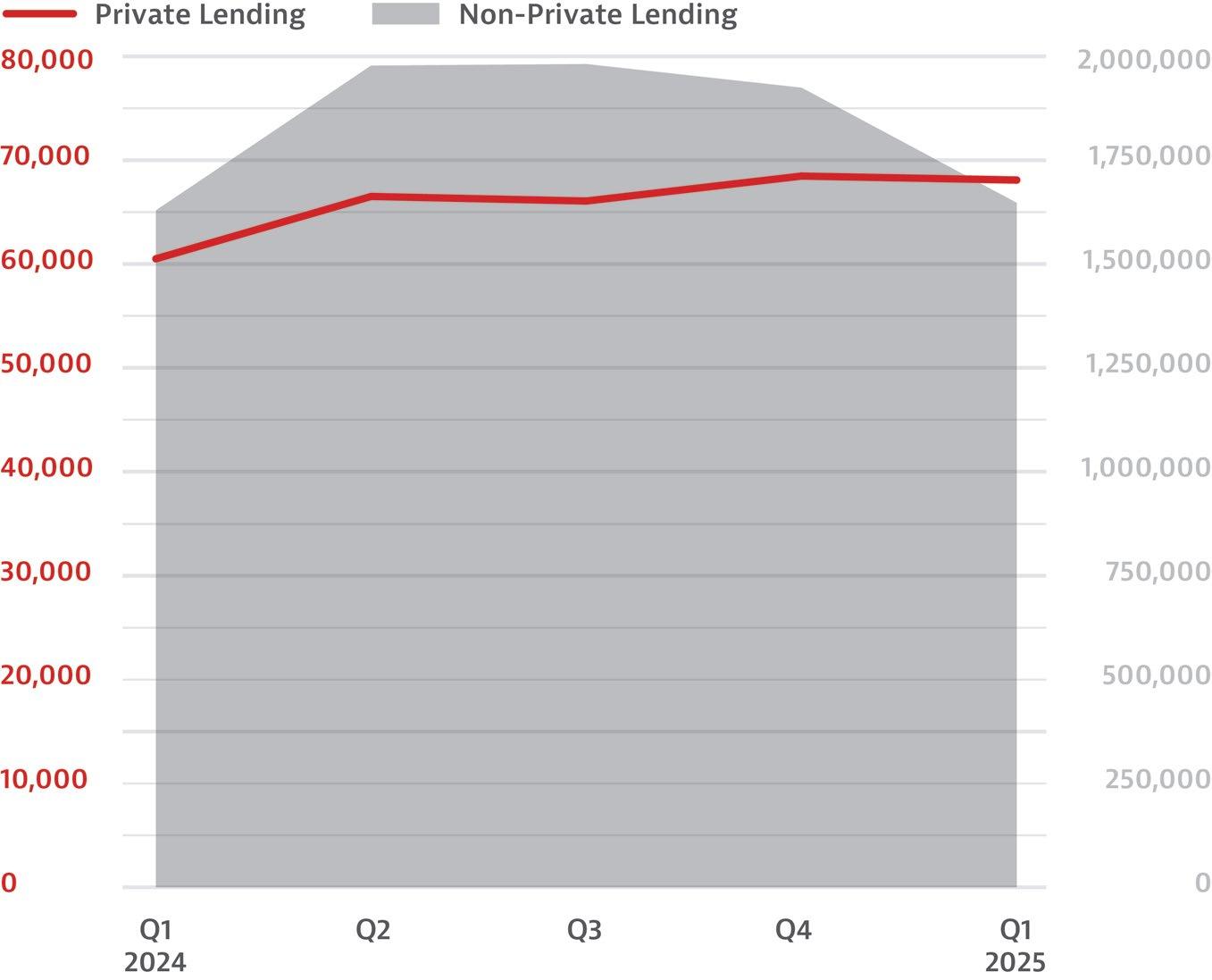
The growth was shared among areas across the country. Specifically, in the largest areas, nine of the top 10 states saw an increase in originations compared to firstquarter 2024 (see Fig .2). More granularly, 18 of the top 20 MSAs saw an increase in originations compared to Q1 2024, and 13 of them saw a growth of more than 10%.
It is interesting to note that the Tier II (PA, OH, NY, NJ) and Tier III (NC, MD) saw larger increases in activity relative to the “Big Three” (TX, FL, CA). Tiers are determined using private lending units originated. California was the only state that experienced contraction and now is the third largest state by loan count; however, the loan sizes are much larger in California relative to Texas and Florida.
Average private lending mortgage amounts have changed significantly YOY.
Among the top 25 states, Forseca notes three YOY trends (see Fig. 3).
Nine states saw a decrease in average mortgage amount, and the remaining 16 states in the analysis experienced mostly single-digit increases.”
First, nine states saw a decrease in average mortgage amount, and the remaining 16 states in the analysis experienced mostly single-digit increases. Second, the states with the largest contractions were Indiana, Alabama, Ohio, North Carolina, and Georgia. Third, the states with the largest growth were Michigan, Virginia, and New Jersey.
Among the top 50 MSAs by total originations, the following 10 saw the largest
increase in private lending originations compared to the same period last year:
1 KANSAS CITY, MO-KS METRO AREA (68%)
2 BIRMINGHAM, AL METRO AREA (56%)
3 CLEVELAND, OH METRO AREA (55%)
4 SAN JOSE-SUNNYVALE-SANTA CLARA, CA METRO AREA (52%)
5 RICHMOND, VA METRO AREA (49%)
6 COLUMBIA, SC METRO AREA (43%)
7 DETROIT-WARREN-DEARBORN, MI METRO AREA (42%)
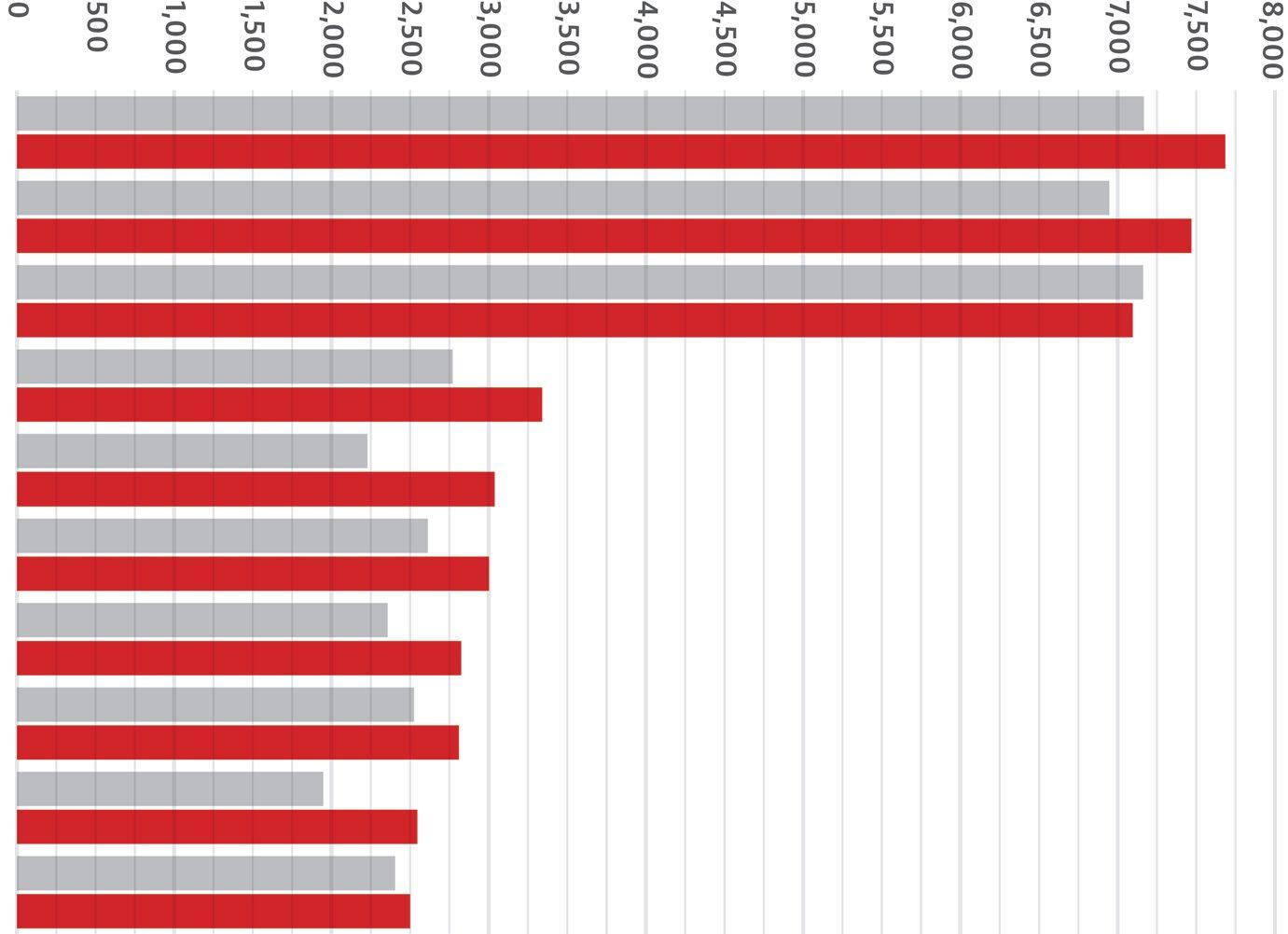


8 OKLAHOMA CITY, OK METRO AREA (40%)
9 TAMPA-ST. PETERSBURG-CLEARWATER, FL METRO AREA (40%)
10 GREENVILLE-ANDERSON-GREER, SC METRO AREA (38%)
Despite the growth across the board, there remained some areas that underperformed relative to first-quarter 2024. Among the top 50 MSAs, the following are the only ones to see a decline in private lending originations compared to the same period last year:
1 SACRAMENTO-ROSEVILLE-FOLSOM, CA METRO AREA (-32%)
2 SAN FRANCISCO-OAKLAND-FREMONT, CA METRO AREA (-24%)
3 CHICAGO-NAPERVILLE-ELGIN, IL-IN METRO AREA (-19%)
4 PITTSBURGH, PA METRO AREA (-15%)
5 CAPE CORAL-FORT MYERS, FL METRO AREA (-14%)
6 BOSTON-CAMBRIDGE-NEWTON, MA-NH METRO AREA (-6%)
7 SAN ANTONIO-NEW BRAUNFELS, TX METRO AREA (-2%)
8 AUSTIN-ROUND ROCK-SAN MARCOS, TX METRO AREA (-1%)
9 MCALLEN-EDINBURG-MISSION, TX METRO AREA (-1%)
In 2025, 7,565 private lenders originated a loan in the first quarter. This is a more
than 20% increase from first-quarter 2024. There are still 5,754 private lenders that have yet to originate a loan in 2025 that originated in 2024—this can be thought of as potential “exits.” (see Fig. 4).
There was a slight consolidation at the top of the market: The top 10 private lenders by originations made up 25% of the market, compared to 22% in the first quarter of last year. Seven of the top 10 private lenders experienced double-digit growth YOY. Generally, the top players have remained the same since last year, but there are some new large players that have seen a significant increase in market share. Cv3 Financial Services, just over one year into starting their business, is solidifying themselves as a Top 10 lender in the space, nearly doubling their originations in comparison to the first quarter of last year (see Fig. 5).
Compared to first-quarter 2024, there was an increase in private lending loans bought, but there was a consolidation in the number of buyers in the market. There was a 5% increase in loans bought, and a 20% decrease in the number of loan buyers in the market. Although the number of loan buyers has contracted, Forecasa did not identify any material loan buyers exiting the market.


Although originations have increased, negative remark filings have increased as well compared to first-quarter 2024. Negative remarks are any type of preforeclosure filing (e.g., lis pendens, notice of trustee sale, notice of foreclosure, etc.). Figure 6 shows the number of negative remark filings with a private lender, firstquarter 2025 compared to first-quarter 2024. Although the lender is not always listed on negative remark filings due to loans being bought and sold on the secondary market, these filings can be used as a proxy for describing the market.
There were more negative remark filings with a private lender in first-quarter 2025 than in any quarter in 2024. There was an increase of 13% from firstquarter 2024 and an increase of 18% from fourth-quarter 2024 (see Fig. 7).
Forecasa not only tracks negative remark transactions but also identifies the negative remark borrowers. As of May 2025, Forecasa has identified more than 6,200 private lending borrowers who have had a negative remark filed against them by either a private lender or a private loan buyer. This population of borrowers continues to update and expand daily.
Private lending in first-quarter 2025 saw strong momentum, driven by both higher origination volumes and a growing lender base. Origination units rose 13% yearover-year, with total volume surpassing $33.2 billion.



Michael Fogliano is a product manager at Forecasa, responsible for product development and data analysis. After studying mathematics, Fogliano gained experience in several industries, always working with complex data.

Sean Morgan is the founder and CEO of Forecasa, where his primary focus is product and business development. With a background in oil and gas intelligence, Morgan and his team achieved a successful exit several years ago, before entering the lending analytics space. Before his tenure in the energy sector, Morgan began his career as a CPA for PwC, cultivating a strong foundation in data interpretation and strategic insights.

























































A historic Birmingham neighborhood gets a second act, thanks to a partnership between values-centered developers and mission-aligned capital providers.
LARRY GILMORE, CLEARBLU CAPITAL GROUP
Lender // ClearBlu
Capital Group
Borrower // Restore Common Ground LLC
Location // Norwood neighborhood in Birmingham, Alabama
Architectural Style // American Foursquare
Square Footage // 2,148
Year Built // 1930
Loan Amount // $274,000
LTV // 75%
Interest Rate // 7.5%
Length of Loan // 30 years
Rehab Costs // Over $100,000
Borrower Experience // Mid to high
Norwood is a historic neighborhood in Birmingham, Alabama, originally designed in 1910 as a “streetcar suburb.” By the 1930s, rising automobile ownership and school integration shifted local demographics. Affluent families moved to newer suburbs, and those living in communities displaced by the I-20/59 interstate construction projects began settling in Norwood.
Norwood is experiencing some exciting revitalization efforts aimed at enhancing quality of life. Notably, The City of Birmingham secured nearly $9 million in federal funding for transportation improvements, creating safer, more accessible routes for cyclists and pedestrians. With continued investment in infrastructure, housing, and community programs, Norwood’s future looks bright.
Restore Common Ground’s mission is to renew and transform distressed neighborhoods through equitable, Christcentered real estate development. The organization is committed to creating safe, dignified, and affordable housing that restores hope, promotes stability,


and empowers low- to moderate-income families. Through integrity, transparency, and community collaboration, they build spaces where families can thrive— physically, spiritually, and economically.
In Norwood, Restore Common Ground acquired a turn-of-the-century fivebedroom property and transformed it into a modern beauty while respecting its traditional architectural roots. Ideally located just minutes from downtown Birmingham, Top Golf, Legacy Arena, and a soon-to-be opened amphitheater, the home blends historic charm with contemporary convenience.
ClearBlu Capital Group provided acquisition and renovation financing for the property, helping elevate its value from $110,000 to nearly $400,000 in just eight months. The short- and longterm financing options were crucial, allowing the owners to transition from a renovation loan to a 30-year amortized loan at 7.7% after securing a lease client.
ClearBlu Capital helps missiondriven developers scale efficiently using a strategic approach:
LOAN SUBMISSION STANDARDIZATION. Collects all necessary details upfront to facilitate fast term sheet turnaround.
TECHNOLOGY TO ELIMINATE DUPLICATION. One-time document collection from clients allows for a sharper focus on project viability.
TRANSPARENCY AND RELIABILITY. Conditional loan and closure terms are issued within two hours of receiving a full application.
VENDOR COORDINATION. Proactive relationships with appraisers, attorneys, and title companies and use of a cloud-based portal ensures seamless communication.
CLIENT-FOCUSED APPROACH. Long-term objectives and resource support drive financing strategies and sustainable success.
Working with mission-driven developers like Restore Common Ground affirms ClearBlu Capital Group’s commitment to its mission: transforming the face of wealth by providing coaching, credit, capital, and custom automation solutions that help small to mid-size businesses and real estate investors grow sustainably.


Larry Gilmore is president and CEO of ClearBlu Capital. Before launching the company, he served as vice president at HSBC, where he led community lending. He has managed numerous national organizations focused on increasing education and awareness within financial services, including the Student Loan Alliance. He is also the co-founder of Hope LoanPort, a technology that improves communication between mortgage borrowers, and the HOPE NOW Alliance, which coordinates strategies to improve the borrower experience. Other roles have included vice president of industry relations and emerging segments for H&R Block Mortgage, associate director for affordable lending for the Mortgage Bankers Association (MBA), and manager of market opportunities for Wells Fargo Bank.
When a flip in Texas started to fall apart, smart structure brought it back from the brink.

Jet Lending funded a flip of a singlefamily home in Ingleside, Texas. It was appraised at $216,000, with a rehab budget set at $70,000. The investor issued a loan for $116,640.
On paper, everything was penciled out. The borrower, based out of state, appeared motivated and ready to execute. The strategy was clean: buy, fix, flip.
Then came the execution.
The borrower hired a local contractor, sent money upfront, and expected progress. Instead, the jobsite stalled almost immediately. Draw inspections revealed minimal work completed. The borrower was making interest payments on a non-performing project. Meanwhile, the contractor was unresponsive.
From day one, our inspector flagged concerns, noting the borrower was sending money to a contractor he hardly knew and who was probably using the funds on other jobs. Jet Lending was getting strung along, and the clock was ticking on interest.
First, we stopped the draw process: No work, no capital. But the borrower bypassed the system, sending another $20,000
directly to the contractor against advice. In return, the contractor installed what could generously be valued at $2,500 worth of insulation and vanished. Again.
This wasn’t just a cost overrun. It was a collapse of operational control.
With funds drained and progress stalled, the borrower admitted he was out of money and options.
This is where most lenders would cut their losses and walk away. But Jet Lending took a different approach: We took control.
Our draw team—Kevin, Summer, Johnny, and Eddie—devised a recovery strategy. Summer, the draw coordinator, outlined the pivot: A $5,000 disbursement so the borrower could fly in a new out-ofstate contractor. Once Kevin confirmed the new contractor’s presence on-site, another $10,000 would be released.
These moves marked the start of a milestonebased micro-tranche funding system:
» CAPITAL RELEASED ONLY UPON PERFORMANCE


» ON-SITE VERIFICATION OF LABOR AND MATERIALS REQUIRED BEFORE EACH DISBURSEMENT
» NO FUNDS MOVED BASED ON PROMISES—ONLY PROOF
Jet Lending didn’t increase the risk; we redistributed it through structure.
Jet Lending also tapped its Inglesidearea network to locate reputable contractors. Kevin made multiple site visits to map out which elements were incomplete, where funds had truly gone, and how to stabilize the project.
Our inspectors returned with hard data. Our coordinator enforced the revised draw protocol. Our executive team assessed exposure.
This was no longer just a project; it had become a case study in realtime asset management.
To his credit, the borrower followed the new plan. The new crew arrived, and he stopped trusting blindly. Under a tighter structure, the flip regained traction. Yes, timelines slipped. Yes, the profit margin was squeezed. But the deal wasn’t a loss: The project was salvaged, and the borrower learned important lessons. Traditional lenders might have cited breach and walked away. Jet Lending didn’t. Instead of cutting the borrower off, our team focused on protecting the asset—and by extension, the borrower’s outcome.
From this experience came lasting changes to our internal systems that marked an institutional shift:
» ENHANCED OVERSIGHT FOR OUTOF-STATE BORROWERS
» VERIFICATION OF ALL NEW CONTRACTORS VIA NETWORK REFERRALS OR PROOF-OF-PERFORMANCE
» DEFAULT USE OF MILESTONE-BASED DRAW DISBURSEMENTS FOR SUSPECT PROJECTS
» MICRO-TRANCHE FUNDING APPROVAL ONLY UPON VISUAL INSPECTION AND LABOR/MATERIAL MATCH
» CAPITAL FREEZES FOR ANY PROJECTS WITH UNVERIFIED DRAW REQUESTS
We also launched an internal “Project Health Scorecard” that scored:
» SPEED OF WORK
» MATCH BETWEEN DRAW REQUEST AND VISIBLE PROGRESS
» ON-SITE LABOR AND MATERIAL PRESENCE
» PERCENTAGE OF BUDGET BURNED
Project scoring under 70 triggers a pause-and-review, not as punishment but as protection.
CONTRACTOR RED FLAGS
Lenders and investors must remain hyper-vigilant when it comes to contractor behavior. Here are five immediate warning signs to watch for:
1 FRONT-LOADED PAYMENT REQUESTS WITHOUT VISIBLE WORK. If a contractor asks for large sums upfront without measurable work completed, stop.
2 VAGUE OR SHIFTING SCOPE OF WORK. This is a sign that the borrower/contractor isn’t operating from a real plan.
3 NO PERMITS OR INSPECTIONS. Skipping these is often a shortcut that hides inferior work.
4 UNVERIFIABLE REFERENCES. If they can’t provide names and numbers of satisfied clients, assume there are none.
5 INCONSISTENT JOBSITE PRESENCE. Sporadic or absent work crews are a dead giveaway of overbooked, underperforming contractors.
Upon reflection, the borrower acknowledged his mistakes. He realized he moved too fast and hadn’t vetted the contractor or maintained oversight. But we didn’t just tell him what went wrong. We gave him a roadmap to fix it. By sticking with the new process, the project was completed. Both the borrower and Jet Lending avoided a total loss.
The unglamorous part of lending is what happens when borrowers’ misstep, contractors underperform, and projects slip out of control. A process like the one we have in place proves its worth after the funding.
The lesson? Don’t fund trust. Fund control.
Lenders should view every troubled deal as more than a crisis—it’s an opportunity to sharpen systems, elevate teams, and protect long-term relationships. When lenders stay engaged and solve problems with their borrowers, they don’t just save capital—they build loyalty.
The more successful your borrower becomes, the more likely they are to come back and do another deal. Repeat borrowers are built through outcomes, not origination. Don’t run from bad deals once you’re in them. Instead, embed case studies like this into your internal training, so your team improves with every challenge.
The best lenders don’t just close loans. They create systems that close gaps—and finish properties.

ALEX BURIAK

After graduating from the University of Pittsburgh and National University of Health Sciences, he spent three years running multiple clinics. His search for a better avenue to raise capital to start another practice led him to real estate.
Buriak has helped expand real estate companies to other markets and states and has solidified and modernized operations to achieve efficiency and ease of business. He regularly speaks on panels, addressing lending, business, and underwriting operations and strategies.
Buriak has bachelor’s degrees in emergency medicine and natural sciences (focus in medical sciences) and a doctorate degree in chiropractic, rehabilitation, and natural medicine.

Whether you’re looking to hire or find your next professional home, our newly-launched Jobs Board can help your search.
AAPL Members may post unlimited jobs at no cost. Use our portal to take applications, or link your job to anywhere on the internet.
(There’s no AAPL account required to search or apply for jobs.) Get started today!


Regulatory missteps start with false assumptions about licensing, usury, and how securities laws apply.
NICHOLE MOORE, ESQ., AND JENNIFER YOUNG, ESQ., FORTRA LAW

In private lending, legal missteps often stem not from negligence but from wellintentioned assumptions. The complexity of the regulatory landscape, especially where securities and lending compliance intersects with capital raising, can lead you to rely on structural shortcuts or industry norms that don’t hold up under scrutiny.
1. “WE DON’T NEED A LICENSE; WE ONLY MAKE BUSINESS-PURPOSE LOANS.” Although
licensing requirements for investors making business-purpose loans are generally less restrictive than those for consumer-purpose loans, it is incorrect to assume a license is never required.
Whether a license is necessary depends on several factors, including the state in which the loan is made, the type of entity making the loan, the nature of the collateral securing the loan, the frequency and scope of the lending activity, and whether the lender qualifies for an exemption.
2. “ALL BUSINESS-PURPOSE LOANS ARE EXEMPT FROM USURY LAWS.” Many states do provide exemptions for business or commercial loans, but these exemptions are not universal and often come with specific conditions. Some states apply usury limits regardless of the loan’s purpose, especially if the loan is made by an unlicensed lender or secured by certain types of real estate. Additionally, even in states where businesspurpose loans are generally exempt, the exemption may only apply if the borrower

meets certain criteria, such as being a legal entity rather than an individual. It is essential to review the applicable state laws to determine whether a usury exemption truly applies.
3. “OWNER-OCCUPIED PROPERTY CANNOT BE USED AS COLLATERAL TO SECURE A BUSINESS-PURPOSE LOAN.” A loan may still qualify as business-purpose if the funds are used for a legitimate business activity (e.g., starting a company, purchasing investment property, or acquiring business equipment), even if the borrower’s primary residence is used as collateral. However, because loans secured by owneroccupied properties can trigger additional consumer protection laws, it is important for lenders to clearly document how the loan proceeds will be used to confirm the business nature of the transaction.
4. “WE ARE LICENSED IN STATE X, SO WE ARE LICENSED EVERYWHERE!” A common misconception among lenders is that having a license in one state allows
them to make loans in any other state without obtaining additional licenses. Lending laws are governed at the state level, and each state has its own licensing requirements, even for business-purpose loans. Being licensed in one state does not authorize you to lend in another unless that state specifically recognizes out-ofstate licenses or provides an exemption.
Most states require lenders to obtain a separate license or meet specific criteria to legally originate or service loans within their jurisdiction. Not complying with these requirements can result in penalties, enforcement actions, or the loan being deemed unenforceable.
5. “WE DON’T NEED CUSTOM LOAN DOCUMENTS. IT’S FINE TO REUSE THE SAME DOCUMENTS FOR ALL OUR LOANS IN ALL 50 STATES.” Loan documentation must comply with the specific laws and regulations of the state where the loan is made or where the collateral is located. Each state may have unique requirements related to disclosures, interest rate limits, default provisions, prepayment penalties, recording practices, and enforcement rights.
Using a one-size-fits-all approach can lead to unenforceable terms, regulatory violations, or delays in closing. To ensure compliance and protect both parties, loan documents should be reviewed and tailored to meet the legal standards of the applicable jurisdiction.
6. “WE DON’T REVIEW THE BORROWER’S ENTITY DOCUMENTATION PRIOR TO CLOSING AND FUNDING OUR LOANS.” Whether the borrower is a corporation, LLC, partnership, or another form of business entity, lenders must confirm the entity is properly organized and authorized to enter into a loan agreement.
Not reviewing these documents could lead to issues with enforceability or a situation where the entity lacks the legal capacity to bind itself to the loan. Proper due diligence ensures the loan transaction is valid and reduces the risk of future disputes. It is essential for lenders to thoroughly review these documents to verify the borrower’s legal status, authority to borrow, and the structure of the entity.
One particularly high-risk area is securities law, where assumptions based on structure or terminology can lead lenders into regulatory trouble. Even seasoned lenders and fund managers can fall prey to misunderstandings around securities law. If you raise capital from investors, even to make loans, you may be engaged in securities activity, regardless of how you label the transaction. Below are four common securities law misconceptions that could expose a lender to serious regulatory risk.
7. “WE’RE JUST MAKING LOANS, SO IT’S NOT A SECURITIES OFFERING.” Although originating loans is not inherently a securities activity, the way you finance those loans may be.
If you raise capital from investors to fund lending operations, and those investors are passive—meaning they rely on your efforts to generate returns—you may be offering securities. Courts often apply the Howey test to determine whether an arrangement constitutes an “investment contract” (SEC v. W.J. Howey Co., 328 U.S. 293 (1946)). If your structure involves an investment of money in a common enterprise with an expectation of profits derived primarily from your efforts, it likely meets the definition of a security.
Working with generalist counsel or relying on industry norms can leave you vulnerable to regulatory enforcement or investor disputes.”
8. “IF IT’S STRUCTURED AS A NOTE, IT’S NOT A SECURITY TRANSACTION.” Not all promissory notes are exempt from securities regulation. Under the Reves test (Reves v. Ernst & Young, 494 U.S. 56 (1990)), courts evaluate whether a note resembles a security by considering factors such as the motivations of the parties, the plan of distribution, and the reasonable expectations of the investing public.
Notes issued to raise capital from passive investors, especially where repayment depends on your loan portfolio’s performance, are often treated as securities, regardless of how they are labeled.
9. “IT’S A JOINT VENTURE, SO IT’S NOT A SECURITY.” Labeling an arrangement as a “joint venture,” or “JV,” does not automatically remove it from securities law jurisdiction. If your capital partner is not meaningfully involved in the management and relies on you to generate returns, regulators and courts may deem the arrangement an investment contract. Passive involvement, coupled with a profit expectation from your efforts, satisfies the Howey even if the structure is styled as a JV.
10. “OUR FUND IS EXEMPT UNDER REGULATION D, SO SECURITIES LAWS DON’T APPLY.” It’s a common misconception that a Regulation D exemption means securities laws no longer apply to your offering. Regulation D codified under 17 C.F.R. §§ 230.501 to 230.508 merely provides an exemption from registration with the SEC. It does not exempt you from the broader requirements of securities law.
If you’re relying on Rule 506(b) or Rule 506(c), your offering is still subject to critical federal rules, including the antifraud provisions of Rule 10b-5 under the Securities Exchange Act of 1934 (17 C.F.R. § 240.10b-5), which prohibits materially misleading statements or omissions in connection with the sale of securities.
You also must ensure compliance with the “bad actor” disqualification rules under Rule 506(d), verify accredited investor status when using Rule 506(c), and observe any relevant state blue sky notice filing requirements under Section 18(b)(4)(D) of the Securities Act (15 U.S.C. § 77r).
In short, claiming a Reg D exemption does not relieve you of the responsibility to comply with securities laws—it simply changes how you comply. Misunderstanding this can expose you to serious legal and financial consequences.
The private lending space is specialized, and so are the legal issues it presents. Working with generalist counsel or relying on industry norms can leave you vulnerable to regulatory enforcement or investor disputes. In fact, private lending’s specialized nature makes it even more critical to work with attorneys who understand the unique intersections of lending and securities compliance. It requires not just technical knowledge, but industry-specific insight. To protect your operation, reputation, and investors, it’s essential to engage attorneys who truly know the space.


Nichole Moore is an attorney with Fortra Law—recently rebranded from Geraci LLP— in their banking and finance department. Moore has served as assistant general counsel for a government agency, representing the agency in all phases of real estate development and advising on the risks associated with multi-layered real estate transactions. Moore’s past experience also includes foreclosure and bankruptcy litigation, negotiations, contract review, and drafting and legislative drafting.

Young is a partner on the corporate and securities team at Fortra Law, which specializes in real-estate-focused private placements and other alternative investments for private lenders, real estate developers, and real estate entrepreneurs. They also establish mortgage funds, real estate acquisition funds and syndications, REITs, and Qualified Opportunity Funds; prepare complex private and public securities offerings for alternative investment platforms in the U.S. and abroad; and help clients structure strategic partnerships and create innovative solutions.

Investing in the right people is often less expensive than the hidden costs of hiring mistakes.
PHIL FEIGENBAUM, HUFFMAN ASSOCIATES LLC

Success is powered by people. Every loan funded, process streamlined, and relationship managed ties back to the talent working behind the scenes. When you manage hiring correctly, everything else falls into place.
When it’s done wrong? The costs run far deeper than most companies realize.
Let’s take a look at the hidden costs of hiring gone wrong—and why investing in the right people is often far less expensive than you think.
Hiring mistakes aren’t just frustrating. They’re expensive. A bad hire can lead to missed deadlines, poor execution, compliance issues, or customer churn—all of which affect your bottom line. In some cases, the wrong hire in a leadership or operational role can stall momentum across multiple departments.
Worse, it can cost you your best people. When top producers identify dysfunction in operations, credit, or servicing, they are more apt to leave. They won’t stick around if they feel like they’re doing battle alone, or when poor support jeopardizes their relationships.
According to SHRM’s “The Cost of a Bad Hire Can Be Astronomical,” the cost of a bad hire can reach up to five times their
annual salary when you account for direct costs (e.g., salary and severance), indirect costs (e.g., lost productivity), and the time required to hire and train a replacement.
Private lenders often hesitate when it comes to paying top-tier talent, especially for nonrevenue roles. There is a tendency to view hiring as an expense rather than an investment in infrastructure.
Here’s the reality: Hiring someone for $30,000 less today might cost you millions in the long run. A lower-salaried hire who lacks experience, strategic capability, or leadership instincts may hinder your team’s progress or fail to enhance your systems. That drag compounds over time.
Take for example, a private lender who had a choice between two candidates to lead their post-closing function. One was an experienced leader asking for $150,000 plus bonus, while the other was a lowerlevel manager asking $100,000. Despite no budget limitations, the lender selected the lower-cost option. Within four months, the post-closing team had unraveled— processes weren’t being followed, loans were stalling, and team morale had collapsed.
Eventually, the manager and the team had to be replaced. When the company brought in a consultant to assess the

damage, the recommended solution was nearly identical to the plan the $150,000 candidate had proposed months earlier.
Top performers don’t just cost more; they deliver more. When the market tightens, they’re the ones who fill pipelines, protect your investor relationships, and create efficiencies that scale.
Another mistake? Trying to stretch a midlevel hire into an executive seat. Maybe they’ve been a strong underwriter or operations manager, and the company wants to promote from within. Authentic leadership requires a distinct set of skills, however.
Hiring someone who’s “almost right” may feel like a safe bet, but it’s often more damaging than waiting for the right person.

Misaligned leaders can slow decisionmaking, fail to inspire their teams, and frequently end up micromanaging because they lack confidence at the strategic level.
One private lender promoted a top-producing loan officer to a producing regional sales manager role, hoping their production instincts would translate into leadership. The new manager focused more on personal production than on removing roadblocks for the team, and morale dropped sharply. Within months, team performance declined, and they lost key loan officers to competitors. The takeaway: Top producers need coaching and support, not competition from their boss.
If you’re still viewing compensation through a “how low can we go” lens, you’re missing the point. A company should consider its impact, not just its cost.
Great leaders build culture, attract talent, and fix broken systems. They protect margin by creating efficiencies, avoiding regulatory missteps, and improving execution. These aren’t line items—they’re force multipliers.”
Great leaders build culture, attract talent, and fix broken systems. They protect margin by creating efficiencies, avoiding regulatory missteps, and improving execution. These aren’t line items—they’re force multipliers.
According to McKinsey, high performers are 400% more productive than average
employees, and in complex occupations, that number can climb to 800%. This isn’t a result of working harder—it’s the result of working smarter.
Think about it: Would you rather save $20,000 on your base salary or generate an extra $5 million in funded
Aquisition Experience
2 Led organizations through multiple complex aquisitions of other mortgage/related companies multiple times
1 Led organizations through an aquisition
0 Has not led organizations through an aquisition
Big 4 or Other Formal Accounting Background
4 Big 4 experience
3 Public accounting
2 Large bank accounting group/audit experience
1 Accounting background but not formal
0 No formal accounting background
Big 4 or Other Formal Accounting Background
Does the candidate have a CPA?
Experience Building a Finance Organization
2 Built from scratch
1 Rebuilt a team
0 Only worked in/led established teams
IPO Experience
3 Built/led the finance and accounting framework and taken a company through an IPO
2 Built/led the finance and accounting framework and taken a company up to but not through the IPO process (maybe they were sold prior)
1 Worked in a senior accounting/finance role at a company that has gone though an IPO
0 No IPO experience
Mortgage Banking Experience
3 10+ years of senior-level mortgage banking finance and accounting experience handling complex needs including MSRs, securitizations, hedging, treasury functions
2 10+ years of senior-level mortgage banking finance and accounting exprience but doesn’t have all of the complex experience
1 Less than 10 years of mortgage banking finance and accounting experience
0 Less than 5 years of mortgage banking finance and accounting experience
Offshore/Holding Companies (If Applicable)
3 Set up holding companies/offshore entities at a parent company level in the countries/ territories of relevance to the client
2 Set up holding companies and managed offshore accounting/tax at a parent company level
1 Set up holding companies
0 No experience with holding companies/multiple businesses at a parent company level
Originations/Servicing/Capital Markets Experience
3 Led accounting/finance functions over originations, servicing and capital markets
2 Led accounting/finance functions over originations and either servicing or capital markets
1 Led accounting/finance functions over just originations
volume because your team runs more smoothly and efficiently?
You don’t pay qualified talent more because it looks good on a comp report. You pay them more because they make your business better.
Too often, companies approach hiring with a rigid compensation range in mind and then attempt to find the best available candidate who fits within it. But here’s the truth: When you lock yourself into a salary range, you’re also limiting yourself to the level of talent that’s currently earning it. You’re not hiring for what your company needs; you’re hiring for what you’re willing to pay.
In the private lending space, where roles are nuanced and stakes are high, this approach can seriously limit your upside. If you want a leader who can design systems, scale teams, or rework credit policy to unlock profitability, you need to build your compensation plan around that caliber of impact.
The goal isn’t to overpay; it’s to align compensation with the value the right candidate will deliver. That might mean stretching beyond your initial range, but it also means hiring a candidate who can hit the ground running, motivate your staff, and build a lasting infrastructure.
Set the bar based on outcomes, not averages. Don’t shop for leadership in the middle of the market if you’re trying to build an elite operation.
The best lenders don’t build teams to fill gaps. They hire with purpose, not just managing headcount but
considering talent acquisition a crucial part of strategic planning.
That means budgeting for the leaders you need before you’re desperate for them. You can create scorecards for roles to ensure you hire based on competencies, not personalities. Prioritize talent as infrastructure.
When entering a new channel, such as wholesale lending, many lenders feel they need to hit the ground running by hiring a producing manager to generate volume. Although a small test volume helps evaluate early traction, it can be equally important to hire a channel leader who can validate the business
plan, understand market intricacies, and develop a strategic growth road map. The right leader can identify pitfalls before they become issues, and scale methodically, starting small if needed, and growing sustainably in any market.
In a market as competitive as private lending, the difference between growth and stagnation often comes down to who’s sitting at the table.
Hiring qualified talent isn’t cheap. However, hiring the wrong person is far more expensive. Now’s the time to take stock of your leadership team and hiring practices. Who’s holding your business back, and who do you need to help you accelerate growth?





in executive search for the banking and private lending sectors. With more than 21 years at Huffman, Feigenbaum has excelled in leading high-level search projects, particularly in director, managing director, and C-suite placements.



If you’re looking for a service provider with real experience working with private lenders, this guide is your starting point.
In each issue, we publish a cross section of specialties. These providers do not pay for inclusion. Instead, we vet them by reviewing their product offerings and talking to private lender references.
AAPL members can access all vendors online at aaplonline.com/vendors.
» ACCOUNTING
» BUSINESS CONSULTANTS
» DEFAULT & LOSS MITIGATION
» LEGAL SERVICES
» WAREHOUSE LENDERS

» APPRAISERS & VALUATIONS
» CAPITAL PROVIDERS
» DATA
» ENVIRONMENTAL SERVICES
» LEAD GENERATION
» NOTE BUYING/SELLING
» BROKERS
» FUNDS CONTROL
» LOAN ORIGINATION SERVICES
» LOAN SERVICING
Pinnacle Funding Solutions LLC pinnaclefundingsolutionsllc.com (800) 538-0543
» FIX-AND-FLIP LOANS
» RENTAL LOANS OF ALL TYPES

» GOUND-UP CONSTRUCTION FINANCING
» COMMERCIAL PROPERTY LOANS
Vault Financial Services LLC vaultfs.com (310) 890-4896
» PRIVATE MONEY LOANS
» FIX AND FLIP VENTURES
» BRIDGE LOANS
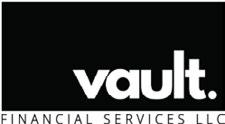
» GROUND-UP CONSTRUCTION PROJECTS
Apple Armadillo Lending AppleArmadillo.com | (936) 323-2167
PushGO LLC pushgollc.com | (863) 284-3148
CFSI Loan Management ThinkCFSI.com (855) 344-2374

» CONSTRUCTION FINANCING SUPPORT
» FEASIBILITY
» FUNDS CONTROL
» INSPECTIONS
Quick Draw Fund Control, Inc.
quickdrawfundcontrol.com (909) 986-7405
Secondary Specialty Development Cost Estimates
» FUND CONTROL SERVICES

» COST REVIEWS AND SITE INSPECTIONS
Sekady sekady.com (619) 988-5876
» DRAW MANAGEMENT PLATFORM
BuildWallet buildwallet.com | (919) 985-3032
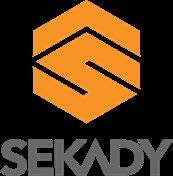
» DEVELOPMENT COST ESTIMATES
» EDUCATION
» FUND ADMINISTRATION
» INSURANCE
» MARKETING
» RECRUITMENT & HEADHUNTING
Baseline baselinesoftware.com (321) 237-0395
» LOAN ORIGINATION » SERVICING

» INVESTOR MANAGEMENT
» FUND MANAGEMENT
» DRAW MANAGEMENT
LendingWise lendingwise.com (888) 400-6516
Secondary Specialty Loan Servicing

» END-TO-END ORIGINATION, MANAGEMENT, AND CRM SOFTWARE
» AUTO-GENERATE AND SEND E-SIGN DOCS
» MILESTONE AND STAGE LOAN MNGMT.
» AUTO ACH DEBIT BOROWERS
» AUTO CREDIT INVESTORS
» DRAW MANAGEMENT WITH FUNDS CONTROL
LoAN o RIGINATI o N SERVICES (Co NTINUED)
Liquid Logics
liquidlogics.com (866) 547-8430

Secondary Specialties Loan Servicing, Lead Generation
» PLATFORM WITH BORROWER PORTAL, CRM, AND SERVICING
» MARKETPLACE PLATFORM FOR INVESTORS, LENDERS, AND BORROWERS
LoanPASS Loanpass.io (954) 361-9147
Secondary Specialty Investor Reporting/Management
» PRODUCT AND PRICING ENGINE
» RULES-BASED DECISIONING
» INTEGRATED WITH LOS, OPEN APIS, BRIDGE, FNF, DSCR, GROUND-UP CONSTRUCTION, MULTIFAMILY
Mortgage Automator mortgageautomator.com (844) 916-1668

Secondary Specialty Loan Servicing Products & Services
» BORROWER PORTALS
» AUTOMATED DOCUMENT GENERATION AND COMMUNICATION
» PAYMENT TRACKING AND PROCESSING
» FUND AND INVESTOR MANAGEMENT/REPORTING
RTL Tech, Inc rtltech.ai (903) 403-3700
Secondary Specialties Data, Business Consultants, Loan Underwriting
» AI AGENTS

» BORROWER/LENDER/BROKER COMMUNICATION DELIVERED BY AI
The Mortgage Office themortgageoffice.com phone
Secondary Specialties Accounting
Western Technologies Group, LLC wtgroupllc.com phone
» FLOOD DETERMINATION REPORTS
Alfred Tech alfred.tech | (424) 230-3080
BLN Software blnsoftware.com | (860) 432-9700
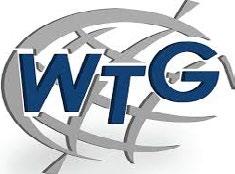
Servicing Pros Inc ServicingPros.com (877) 313-0095
» LOAN SERVICING
FCI Lender Services myfci.com (800) 931-2424
Secondary Specialty Fund Administration
» PRIVATE MONEY SERVICER
» SPECIALTY LOAN SERVICER
GoDocs GoDocs.com (949) 640-9081


» CLOUD-BASED LOAN CLOSING DOCUMENT PREPARATION SOFTWARE FOR COMMERCIAL, MULTIFAMILY, AND 1-4 UNIT RESIDENTIAL PROPERTIES
Note Servicing Center, Inc.
noteservicingcenter.com (800) 646-3445

Servicing for:
» NEW NOTES/LOANS
» FIXED RATE FIRST OR SECOND
» SELLER CARRY BACK FINANCING
» INSTALLMENT SALE
» IMPOUND/ESCROW
» ALL INCLUSIVE TRUST DEEDS (AITD)
» OTHER SERVICING

» ONLINE LOAN ORIGINATION AND SERVICING PORTAL

» ONLINE PORTALS FOR BROKERS, LENDERS AND BORROWERS
» CONSTRUCTION/BRIDGE/ HOLDBACK DRAW CONTROL
» ASSET MANAGEMENT FOR PARTIES RETAINING SERVICING RESPONSIBILITIES FOR LOANS THEY ORIGINATE AND SELL
Statebridge Company LLC statebridgecompany.com (303) 332-7724

» CUSTOM LOAN SERVICING FOR RTL, RESIDENTIAL, COMMERCIAL, AUTO AND CONSUMER LOANS
BSI Financial Services bsifinancial.com | (972) 347-4350
Essex Financial Services LLC essexfs.com | (678) 770-5551
Evergreen Note Servicing notecollection.com | (866) 358-6683
Fileinvite fileinvite.com | (628) 201-0083
Gelt Financial, LLC geltfinancial.com | (561) 221-0900
Land Gorilla landgorilla.com | (805) 250-1976
Superior Loan Servicing superiorloanservicing.com | (818) 483-0027


There was a time—not long ago— when the phrase “women don’t raise capital like men do” echoed a little too loudly at lending conferences, investor meetings, and pitching rooms I found myself in. I could feel the energy shift the moment I walked in. It wasn’t overt, but it showed in the pauses, the glances, the subtle surprise that the person holding the pen, structuring deals, and running the show was me.
I didn’t grow up thinking I’d become a CEO, much less one leading a company that would evolve into a true balance sheet lender. My journey started like many others—with grit, curiosity, and the burning desire to create something of my own. But along the way, I encountered what many women in business do: the quiet undercurrent of doubt, not just from others, but from within.
That’s the most dangerous kind of doubt. It whispers you’re not ready, not qualified, not “cutthroat” enough to swim with sharks. What changed everything was a moment during a capital raise meeting early on. I was pitching my vision, explaining the numbers, the models, the margins. I could see the investors were listening, but not
I found success when I rewrote my inner voice and stopped playing small.
fully leaning in. One of them finally asked, “Who’s the actual decision-maker?”
I smiled and said, “You’re looking at her.”
That moment crystallized something in me. I realized I didn’t need to morph into someone else to be seen as powerful. I needed to own my voice, my values, and the unique lens I bring to lending.
From there, I stopped playing small. I leaned into leadership with both empathy and strategy. I stopped asking for permission and started building a track record that spoke for itself. I surrounded myself with mentors who invested in me, not just my business. I stopped trying to be less feminine and more “financial,” realizing the two are not mutually exclusive. They are, in fact, my superpower.
Today, I run Simplending Financial with a team of powerhouse women.
We’ve transitioned from brokering deals to funding them ourselves—directly, decisively, and with full control.
Becoming a balance sheet lender wasn’t just a financial milestone; it was a mindset shift. It meant we no longer waited for approval—we became the approval.
I’ve raised capital, grown a loyal investor base and, most important, shattered the belief that I had to do it like the boys to win in this space. Now, I mentor other women stepping into finance, helping them rewrite their inner narrative and build real financial firepower.
If there’s one thing I know for sure, it’s this: Limiting beliefs shrink our potential, but the moment you decide you’re enough, everything expands.
Being a woman in this industry isn’t my obstacle. It’s my edge.

... I encountered what many women in business do: the quiet undercurrent of doubt, not just from others, but from within.”








































































